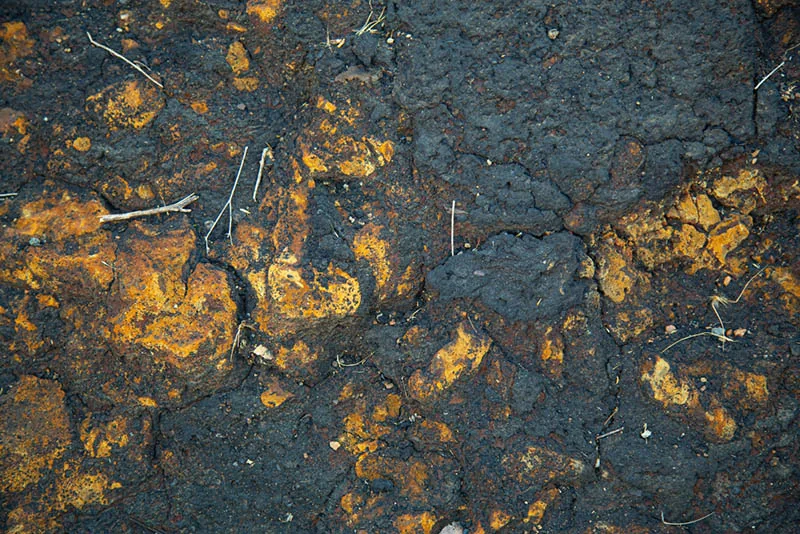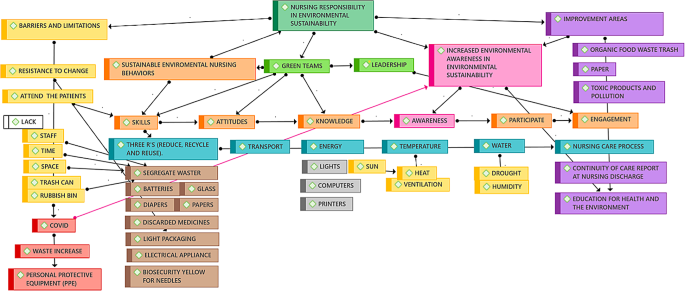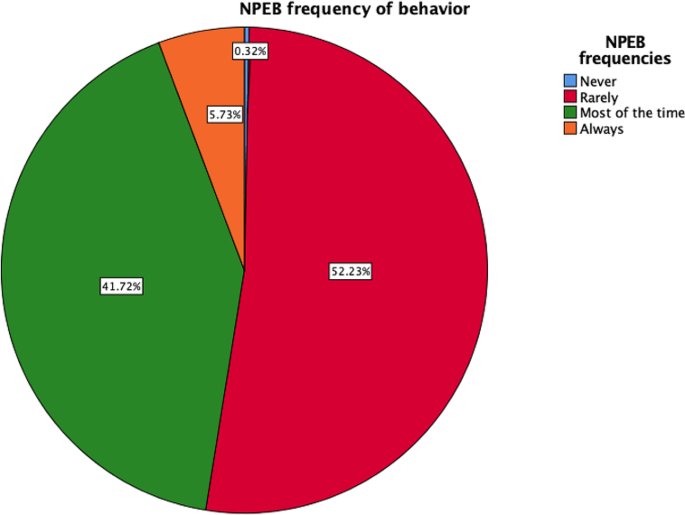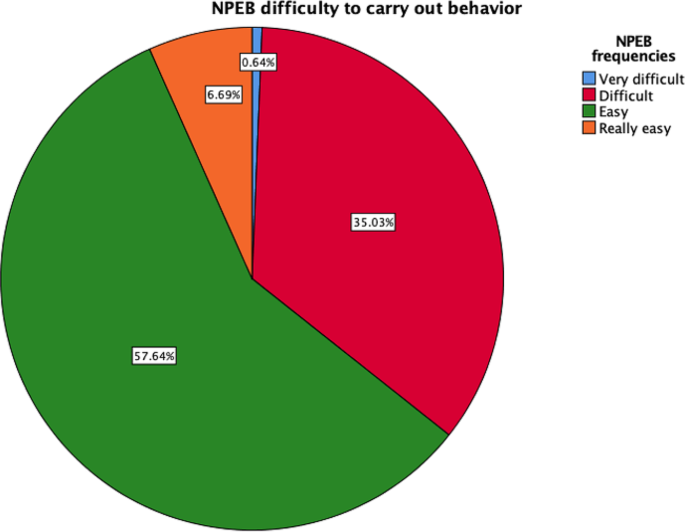

Essay on Care for the Environment
Students are often asked to write an essay on Care for the Environment in their schools and colleges. And if you’re also looking for the same, we have created 100-word, 250-word, and 500-word essays on the topic.
Let’s take a look…
100 Words Essay on Care for the Environment
Understanding the environment.
The environment is everything around us, including plants, animals, and natural resources. We depend on it for survival.
Why should we care?
We need a healthy environment for clean air, water, and food. If we don’t care for it, we may face problems like pollution and global warming.
How can we help?
We can help by reducing waste, recycling, and conserving energy. Planting trees also helps as they absorb harmful gases.
Caring for the environment is crucial for our well-being and future generations. Let’s pledge to protect it.
250 Words Essay on Care for the Environment
The imperative of environmental stewardship.
In an era defined by climate change and biodiversity loss, care for the environment is an imperative. It is no longer a mere ethical consideration, but a fundamental survival strategy for humanity. Our actions today will determine the habitability of Earth for future generations.
The Power of Individual Action
Individual actions can have profound impacts on the environment. Simple behavioral changes, such as reducing waste, recycling, and adopting a plant-based diet, can significantly lower our carbon footprint. However, individual actions alone are not enough to combat the environmental crisis.
The Role of Collective Action
Collective action, encompassing government regulations, business practices, and societal norms, is crucial. Governments can enforce environmental protection laws and incentivize sustainable practices. Businesses can adopt greener operations and produce eco-friendly products. Societies can foster values that prioritize environmental sustainability.
Education as an Environmental Catalyst
Education plays a vital role in environmental stewardship. By integrating environmental education in curricula, we can cultivate an informed generation that understands the value of the environment and the consequences of its degradation.
The Intersection of Social Justice and Environmental Care
Lastly, environmental care is an issue of social justice. Marginalized communities often bear the brunt of environmental degradation. Therefore, environmental justice must be a central aspect of our efforts to care for the environment.
In conclusion, care for the environment is an urgent, multifaceted issue. It requires individual and collective action, education, and a commitment to social justice. Our survival and prosperity depend on our ability to rise to this challenge.
500 Words Essay on Care for the Environment
Introduction.
The environment is our life support system, providing us with everything from the air we breathe to the food we eat. Yet, it is under continuous threat due to human activities. This essay explores the importance of caring for the environment and proposes ways in which we can actively participate in environmental conservation.
The Importance of Environmental Care
The environment is not just a source of resources; it is an intricate web of life that sustains all living organisms. It provides services such as climate regulation, nutrient cycling, and pollination, which are invaluable to human existence. However, the current rate of environmental degradation threatens these essential services. For instance, deforestation disrupts the carbon cycle, leading to climate change. Pollution of water bodies affects aquatic ecosystems, leading to biodiversity loss. Hence, caring for the environment is not just an ethical responsibility; it is a matter of survival.
The Role of Individuals in Environmental Care
While it is easy to blame corporations and governments for environmental degradation, individuals also play a crucial role. Our daily actions, such as the products we buy, the food we eat, and the way we commute, have environmental implications. By making conscious choices, we can significantly reduce our environmental footprint. For example, reducing meat consumption can lower greenhouse gas emissions, while choosing public transportation over private vehicles can decrease air pollution.
The Power of Collective Action
Individual actions, while important, are not enough. We need collective action to bring about systemic change. This involves advocating for sustainable policies, supporting environmentally-friendly businesses, and participating in community initiatives. For instance, joining a local tree-planting initiative can help restore degraded landscapes, while supporting renewable energy can accelerate the transition towards a low-carbon economy.
Education as a Tool for Environmental Care
Education is a powerful tool for fostering environmental care. By integrating environmental education into the curriculum, we can raise awareness about environmental issues and empower students to take action. Furthermore, research and innovation can provide solutions to environmental challenges. For instance, advancements in clean technology can help reduce our reliance on fossil fuels.
Caring for the environment is a shared responsibility that requires concerted efforts from all sectors of society. It involves making conscious choices at an individual level, advocating for sustainable policies at a societal level, and promoting environmental education at an institutional level. By doing so, we can safeguard our life support system and ensure a sustainable future for generations to come.
That’s it! I hope the essay helped you.
If you’re looking for more, here are essays on other interesting topics:
- Essay on Preservation of Environment
- Essay on Green Environment
- Essay on Clean Environment
Apart from these, you can look at all the essays by clicking here .
Happy studying!
Leave a Reply Cancel reply
Your email address will not be published. Required fields are marked *
Save my name, email, and website in this browser for the next time I comment.

25,000+ students realised their study abroad dream with us. Take the first step today
Here’s your new year gift, one app for all your, study abroad needs, start your journey, track your progress, grow with the community and so much more.

Verification Code
An OTP has been sent to your registered mobile no. Please verify

Thanks for your comment !
Our team will review it before it's shown to our readers.

Essay on Save Environment
- Updated on
- Apr 24, 2020

Essay writing is an important part of the school curriculum, competitive exams like GRE , IELTS , TOEFL , etc. and higher education as well. One must know how to precisely select arguments, collect the data based on them and put it all together in their write-up. Usually, the essay topics given to students are based on the latest political, social and environmental issues. Due to the changes occurring in our surroundings, essays based on saving the Environment are becoming very popular. Keeping that in mind, this blog presents you some sample essays on Save Environment.
Sample Essay 1 on Save Environment
This essay on save environment can help you in the PTE Writing Essay, TOEFL Essay Topics and TOEFL Sample Essays !
Sample Essay 2
Sample essay 3 on save environment.
[Bonus] Apart from these sample essays on Save Environment, check out other trending topics for essay writing!
We hope our sample essay on Save Environment have given you some great ideas. If you are preparing for exams like GMAT, GRE, IELTS or SAT and need guidance for the writing session? Book you one on one session with Leverage Edu experts to get a divisive strategy and preparation tips to crack these examinations!
Team Leverage Edu
Leave a Reply Cancel reply
Save my name, email, and website in this browser for the next time I comment.
Contact no. *

Leaving already?
8 Universities with higher ROI than IITs and IIMs
Grab this one-time opportunity to download this ebook
Connect With Us
25,000+ students realised their study abroad dream with us. take the first step today..

Resend OTP in

Need help with?
Study abroad.
UK, Canada, US & More
IELTS, GRE, GMAT & More
Scholarship, Loans & Forex
Country Preference
New Zealand
Which English test are you planning to take?
Which academic test are you planning to take.
Not Sure yet
When are you planning to take the exam?
Already booked my exam slot
Within 2 Months
Want to learn about the test
Which Degree do you wish to pursue?
When do you want to start studying abroad.
September 2024
January 2025
What is your budget to study abroad?

How would you describe this article ?
Please rate this article
We would like to hear more.
Talk to our experts
1800-120-456-456
- Environment Essay

Essay on Understanding and Nurturing Our Environment
The environment is everything that surrounds us – the air we breathe, the water we drink, the soil beneath our feet, and the diverse flora and fauna that inhabit our planet. It's not just a backdrop to our lives; it's the very essence of our existence. In this essay, we'll explore the importance of our environment, the challenges it faces, and what we can do to ensure a sustainable and thriving world for generations to come.
Our environment is a complex and interconnected web of life. Every living organism, from the tiniest microbe to the largest mammal, plays a crucial role in maintaining the balance of ecosystems. This delicate balance ensures the survival of species, including humans. For instance, bees pollinate plants, which produce the oxygen we breathe. Nature is a masterpiece that has evolved over millions of years, and we are just one small part of this intricate tapestry.
Importance of Environment
The environment is crucial for keeping living things healthy.
It helps balance ecosystems.
The environment provides everything necessary for humans, like food, shelter, and air.
It's also a source of natural beauty that is essential for our physical and mental health.
The Threats to Our Environment:
Unfortunately, our actions have disrupted this delicate balance. The rapid industrialization, deforestation, pollution, and over-exploitation of natural resources have led to severe environmental degradation. Climate change, driven by the increase in greenhouse gas emissions, is altering weather patterns, causing extreme events like floods, droughts, and storms. The loss of biodiversity is another alarming concern – species are disappearing at an unprecedented rate due to habitat destruction and pollution.
Impact of Human Activities on the Environment
Human activities like pollution, deforestation, and waste disposal are causing environmental problems like acid rain, climate change, and global warming. The environment has living (biotic) and non-living (abiotic) components. Biotic components include plants, animals, and microorganisms, while abiotic components include things like temperature, light, and soil.
In the living environment, there are producers (like plants), consumers (like animals), and decomposers (like bacteria). Producers use sunlight to make energy, forming the base of the food web. Consumers get their energy by eating other organisms, creating a chain of energy transfer. Decomposers break down waste and dead organisms, recycling nutrients in the soil.
The non-living environment includes climatic factors (like rain and temperature) and edaphic factors (like soil and minerals). Climatic factors affect the water cycle, while edaphic factors provide nutrients and a place for organisms to grow.
The environment includes everything from the air we breathe to the ecosystems we live in. It's crucial to keep it clean for a healthy life. All components of the environment are affected by its condition, so a clean environment is essential for a healthy ecosystem.
Sustainable Practices:
Adopting sustainable practices is a key step towards mitigating environmental degradation. This includes reducing our carbon footprint by using renewable energy, practicing responsible consumption, and minimizing waste. Conservation of natural resources, such as water and forests, is essential. Supporting local and global initiatives that aim to protect the environment, like reforestation projects and wildlife conservation efforts, can make a significant impact.
Education and Awareness:
Creating a sustainable future requires a collective effort, and education is a powerful tool in this regard. Raising awareness about environmental issues, the consequences of our actions, and the importance of conservation is crucial. Education empowers individuals to make informed choices and encourages sustainable practices at both personal and community levels.
Why is a Clean Environment Necessary?
To have a happy and thriving community and country, we really need a clean and safe environment. It's like the basic necessity for life on Earth. Let me break down why having a clean environment is so crucial.
First off, any living thing—whether it's plants, animals, or people—can't survive in a dirty environment. We all need a good and healthy place to live. When things get polluted, it messes up the balance of nature and can even cause diseases. If we keep using up our natural resources too quickly, life on Earth becomes a real struggle.
So, what's causing all this environmental trouble? Well, one big reason is that there are just so many people around, and we're using up a lot of stuff like land, food, water, air, and even fossil fuels and minerals. Cutting down a bunch of trees (we call it deforestation) is also a big problem because it messes up the whole ecosystem.
Then there's pollution—air, water, and soil pollution. It's like throwing a wrench into the gears of nature, making everything go wonky. And you've probably heard about things like the ozone layer getting thinner, global warming, weird weather, and glaciers melting. These are all signs that our environment is in trouble.
But don't worry, we can do things to make it better:
Plant more trees—they're like nature's superheroes, helping balance everything out.
Follow the 3 R's: Reuse stuff, reduce waste, and recycle. It's like giving our planet a high-five.
Ditch the plastic bags—they're not great for our landscapes.
Think about how many people there are and try to slow down the population growth.
By doing these things, we're basically giving our planet a little TLC (tender loving care), and that's how we can keep our environment clean and healthy for everyone.
Policy and Regulation:
Governments and institutions play a vital role in shaping environmental policies and regulations. Strong and enforceable laws are essential to curb activities that harm the environment. This includes regulations on emissions, waste disposal, and protection of natural habitats. International cooperation is also crucial to address global environmental challenges, as issues like climate change know no borders.
The Role of Technology:
Technology can be a double-edged sword in environmental conservation. While some technological advancements contribute to environmental degradation, others offer solutions. Innovative technologies in renewable energy, waste management, and sustainable agriculture can significantly reduce our impact on the environment. Embracing and investing in eco-friendly technologies is a step towards a greener and more sustainable future.
Conclusion:
Our environment is not just a collection of trees, rivers, and animals; it's the foundation of our existence. Understanding the interconnectedness of all living things and recognizing our responsibility as stewards of the Earth is essential. By adopting sustainable practices, fostering education and awareness, implementing effective policies, and embracing eco-friendly technologies, we can work towards healing our planet. The choices we make today will determine the world we leave for future generations – a world that can either flourish in its natural beauty or struggle under the weight of environmental degradation. It's our collective responsibility to ensure that it's the former.

FAQs on Environment Essay
1. What is the Environment?
The environment constitutes the entire ecosystem that includes plants, animals and microorganisms, sunlight, air, rain, temperature, humidity, and other climatic factors. It is basically the surroundings where we live. The environment regulates the life of all living beings on Earth.
2. What are the Three Kinds of Environments?
Biotic Environment: It includes all biotic factors or living forms like plants, animals, and microorganisms.
Abiotic Environment: It includes non-living factors like temperature, light, rainfall, soil, minerals, etc. It comprises the atmosphere, lithosphere, and hydrosphere.
Built Environment: It includes buildings, streets, houses, industries, etc.
3. What are the Major Factors that Lead to the Degradation of the Environment?
The factors that lead to the degradation of the environment are:
The rapid increase in the population.
Growth of industrialization and urbanization.
Deforestation is making the soil infertile (soil that provides nutrients and home to millions of organisms).
Over-consumption of natural resources.
Ozone depletion, global warming, and the greenhouse effect.
4. How do we Save Our Environment?
We must save our environment by maintaining a balanced and healthy ecosystem. We should plant more trees. We should reduce our consumption and reuse and recycle stuff. We should check on the increase in population. We should scarcely use our natural and precious resources. Industries and factories should take precautionary measures before dumping their wastes into the water bodies.
5. How can we protect Mother Earth?
Ways to save Mother Earth include planting more and more trees, using renewable sources of energy, reducing the wastage of water, saving electricity, reducing the use of plastic, conservation of non-renewable resources, conserving the different flora and faunas, taking steps to reduce pollution, etc.
6. What are some ways that humans impact their environment?
Humans have influenced the physical environment in many ways like overpopulation, pollution, burning fossil fuels, and deforestation. Changes like these have generated climate change, soil erosion, poor air quality, and undrinkable water. These negative impacts can affect human behavior and can prompt mass migrations or battles over clean water.
7. Why is the environment of social importance?
Human beings are social animals by nature. They spend a good amount of time in social environments. Their responsibility towards the environment is certainly important because these social environments might support human beings in both personal development goals as well as career development goals.
Environmental Problems: Care of the Planet Essay
Due to rapid population increases, human-generated conditions have caused significant disruption in the earth’s biosphere. Increased population has caused an increase in deforestation and the burning of fossil fuels. According to Brusseau et al. (2019), the world’s population is progressively increasing at a rapid rate. This increase has promoted encroachment of forested land for human settlement. Forest clearance causes climate change, soil erosion, and flooding. Moreover, the burning of fossil fuels due to the development of technology has led to increased emissions of carbon dioxide, which destroys the ozone layer, worsening the problem of climate change. According to research done on the effect of fossil fuel on the environment, fossil fuel is the leading cause of the environmental population (Li et al., 2019). Population pressure and technology have caused significant disruption of the biosphere through deforestation and fossil fuel use.
The earth faces three major environmental crises: overpopulation, climate change, and global warming. Overpopulation is the leading cause of the two other problems. Overpopulation has been caused by the rapid increase in population in developing countries. The rapid population leads to an increase in the clearance of forests and industrialization. The gases produced in these industries disrupt the ozone layer, increasing temperatures. This situation with high temperatures causes the melting of glacial ice and increased precipitation promoting global warming (Tebaldi et al., 2021). Continued global warming slowly leads to changes in climate over time. The continued increase in population, global warming, and climate change has caused an environmental crisis.
In conclusion, human beings should take good care of their planet. They should use birth control measures to control the rate of population growth. Moreover, governments should encourage the use of renewable energy sources to fossil fuels to reduce the effects of climate change and global warming. More effort should be given to planting trees to encounter the impact of deforestation (Al-Ghussain, 2018). Every person has to take care of the environment. Therefore, every person should make it their role to conserve the environment and save the world from environmental crises.
Brusseau, M. L., Pepper, I. L., & Gerba, C. P. (2019). The Extent of Global Pollution. Environmental and Pollution Science , 3–8. Web.
Li, K., Fang, L., & He, L. (2019). How population and energy price affect China’s environmental pollution? Energy Policy , 129 , 386–396. Web.
Tebaldi, C., Ranasinghe, R., Vousdoukas, M., Rasmussen, D. J., Vega-Westhoff, B., Kirezci, E., Kopp, R. E., Sriver, R., & Mentaschi, L. (2021). Extreme sea levels at different global warming levels. Nature Climate Change , 11 (9), 746–751. Web.
Al-Ghussain, L. (2018). Global warming: Review on driving forces and mitigation. Environmental Progress & Sustainable Energy , 38 (1), 13–21. Web.
- Chicago (A-D)
- Chicago (N-B)
IvyPanda. (2022, December 29). Environmental Problems: Care of the Planet. https://ivypanda.com/essays/environmental-problems-care-of-the-planet/
"Environmental Problems: Care of the Planet." IvyPanda , 29 Dec. 2022, ivypanda.com/essays/environmental-problems-care-of-the-planet/.
IvyPanda . (2022) 'Environmental Problems: Care of the Planet'. 29 December.
IvyPanda . 2022. "Environmental Problems: Care of the Planet." December 29, 2022. https://ivypanda.com/essays/environmental-problems-care-of-the-planet/.
1. IvyPanda . "Environmental Problems: Care of the Planet." December 29, 2022. https://ivypanda.com/essays/environmental-problems-care-of-the-planet/.
Bibliography
IvyPanda . "Environmental Problems: Care of the Planet." December 29, 2022. https://ivypanda.com/essays/environmental-problems-care-of-the-planet/.
- Ecosystem and the Biosphere: Effect of Human Activities
- Biosphere Evolution and Threats
- The Effect of the Ozone Layer on the earth
- What we can do to protect Ozone layer
- Physical Science Explorations: Ozone
- Biosphere: Sydney in Australia
- Ozone Hole, Greenhouse Effect and Montreal Protocol
- Chemistry and Physics of Stratospheric Ozone
- Ozone Holes, Their Causes, Effects and Reduction
- Efforts to Alleviate Ozone Depletion
- Analysis of Tesco’s Deforestation Problem
- Green Steel Production Technology Assessment
- The Influence of Water Quality on the Population of Salmonid Fish
- Rainwater Harvesting to Replenish Underground Water in India
- Australia's State of the Environment

How to Write an Essay on the Environment
The environment where we live affects how we function and socialize as human beings. Over the years, there has been a growing focus on climate change and how shifts in weather events and temperatures are affecting living organisms.
Of course, although climate change is one of the threatening and pervasive things, currently, there are many other areas one can write about including biodiversity and pollution. Choosing what to write about is just one aspect of creating a good essay on the environment.
When tasked with writing an assignment on the environment, there are some specific factors to consider. Of course, different instructors issue different guidelines for academic writing, including the format and citation style to use. Make sure to adhere to these and stick to the question as outlined in the assignment prompt. Here are additional tips for effective essay writing.

Start by Choosing a Good Topic
The most important step in effective academic writing is selecting an appropriate topic. There are many areas of the environment where you can base your writing. However, you have to make sure that your preferred topic is in line with your assignment question, as set out in the prompt. Of course, there are times when instructors provide specific topics for their students, eliminating the need for topic selection.
In other instances, students are accorded the freedom to create their own topics. With such freedom, comes the responsibility of making sure that your topic is relevant for your project and current. Also, you have to make sure that your area of writing is precise enough to be covered within the scope of your essay. Those who are unable to find good topics can seek custom writing from professionals online.
Your essay on the environment can be in any of the following areas:• Climate change or global warming and its impacts;• Biodiversity;• Environmental pollution and how it affects living organisms.
Since the environment is a very broad topic area, you will need to conduct some research to make sure that you pick a relevant and current topic. Also, make sure to narrow down your topic .
Brainstorm for Ideas and Create a Plan

Once you have a topic for your essay, the next step is brainstorming. This is the process of thinking about the topic and noting down everything you know. The notes created here can form part of your outline.
When it comes to outlining, having a good plan will save you time much later in the course of your research and writing. This stage may require some preliminary research as well as the creation of a working thesis statement.
Create an Interesting Thesis Statement
Now that you have a topic and an outline, it is time to create a working thesis. Please note that your statement may change several in the course of your research and writing. As you proceed with your work, you may encounter different ideas and change your perspective on important issues. In essence, your thesis should be clear, arguable, interesting, and simple. It should demonstrate the position you intend to take with your argumentation.
Conduct Research and Document Sources
It is impossible to write a good essay on the environment if you don’t gather enough data and evidence. Quality academic papers present coherent arguments where ideas and points are supported using credible evidence. Conduct research on books, electronic journals, reputable websites, and primary sources. Just make sure to document the sources of your information to help with citations and references. Most importantly, take keen notes that will make organizing your essay easier.
Start Writing as Soon as Possible
Do not spend so much time with preparations that you forget to make time for the actual writing. You may have heard that freewriting is the easiest way to overcome writer’s block. However, there is an even better way — writing from an outline and researching the various sections of your paper. Just make sure to give each main idea its own paragraph, supported using evidence and examples from credible sources.
As you write your paper, grammar and syntax should not be your main priority. At this stage, just work on the drafting of your ideas and points. You can finish by editing your work for grammatical, content, and formatting consistency.
Please note that the tips provided in this article are meant to guide you through the process of academic essay writing. You still have to make sure that your writing adheres to your assignment instructions. Most importantly, you need to ensure that you proofread and edit your work.

Importance of Environment
We truly cannot understand the real worth of the environment. But we can estimate some of its importance that can help us understand its importance. It plays a vital role in keeping living things healthy in the environment.
Likewise, it maintains the ecological balance that will keep check of life on earth. It provides food, shelter, air, and fulfills all the human needs whether big or small.
Moreover, the entire life support of humans depends wholly on the environmental factors. In addition, it also helps in maintaining various life cycles on earth.
Most importantly, our environment is the source of natural beauty and is necessary for maintaining physical and mental health.
Get the huge list of more than 500 Essay Topics and Ideas
Benefits of the Environment
The environment gives us countless benefits that we can’t repay our entire life. As they are connected with the forest, trees, animals, water, and air. The forest and trees filter the air and absorb harmful gases. Plants purify water, reduce the chances of flood maintain natural balance and many others.
Moreover, the environment keeps a close check on the environment and its functioning, It regulates the vital systems that are essential for the ecosystem. Besides, it maintains the culture and quality of life on earth.
The environment regulates various natural cycles that happen daily. These cycles help in maintaining the natural balance between living things and the environment. Disturbance of these things can ultimately affect the life cycle of humans and other living beings.
The environment has helped us and other living beings to flourish and grow from thousands of years. The environment provides us fertile land, water, air, livestock and many essential things for survival.
Cause of Environmental Degradation
Human activities are the major cause of environmental degradation because most of the activities humans do harm the environment in some way. The activities of humans that causes environmental degradation is pollution, defective environmental policies, chemicals, greenhouse gases, global warming, ozone depletion, etc.
All these affect the environment badly. Besides, these the overuse of natural resources will create a situation in the future there will be no resources for consumption. And the most basic necessity of living air will get so polluted that humans have to use bottled oxygen for breathing.

Above all, increasing human activity is exerting more pressure on the surface of the earth which is causing many disasters in an unnatural form. Also, we are using the natural resources at a pace that within a few years they will vanish from the earth. To conclude, we can say that it is the environment that is keeping us alive. Without the blanket of environment, we won’t be able to survive.
Moreover, the environment’s contribution to life cannot be repaid. Besides, still what the environment has done for us, in return we only have damaged and degraded it.
FAQs about Essay on Environment
Q.1 What is the true meaning of the environment?
A.1 The ecosystem that includes all the plants, animals, birds, reptiles, insects, water bodies, fishes, human beings, trees, microorganisms and many more are part of the environment. Besides, all these constitute the environment.
Q.2 What is the three types of the environment?
A.2 The three types of environment includes the physical, social, and cultural environment. Besides, various scientists have defined different types and numbers of environment.
Customize your course in 30 seconds
Which class are you in.

- Travelling Essay
- Picnic Essay
- Our Country Essay
- My Parents Essay
- Essay on Favourite Personality
- Essay on Memorable Day of My Life
- Essay on Knowledge is Power
- Essay on Gurpurab
- Essay on My Favourite Season
- Essay on Types of Sports
Leave a Reply Cancel reply
Your email address will not be published. Required fields are marked *
Download the App

Caring for the Environment: 7 Reasons to Protect & Sustain Earth
If the environment is destroyed, there’s nowhere to escape to, so here are seven reasons to start caring about the state of the earth.
Green Coast is supported by its readers. We may earn an affiliate commission at no extra cost to you if you buy through a link on this page . Learn more .

The environment has become a prominent but controversial talking point in modern times. We all understand that many of the natural resources we consume are not infinite, and problems like air pollution and waste management aren’t going to go away without taking action.
However, a lot of the headline discourse on environmental issues is going on at a political level, far away from the mundanities of everyday life. This means it’s easy to wonder why should we care for the environment, especially if you’re not glued to the news.
If you’re looking for the reasons why we should care for the environment, this article explores the seven key reasons why the environment and its care should matter to every person on the planet.
What do we mean when we refer to ‘the environment’?
Put plainly, the environment is the sum of all living and non-living things on Earth (including climate, radiation, electrical phenomena, and weather) and their non-artificial relationships and interactions. The natural environment exists on a continuum with environments that are artificial or at least heavily influenced by man.

The environment spans vast natural ecosystems, including rock, soil, water, and vegetation. Natural resources like fossil fuels and the atmosphere are also part. Constituent ecosystems within the environment consist of various forms of life, ranging from microorganisms to animals.
Of course, the environment we experience today has been shaped by the activity of man. Built environments are the opposite of natural environments and have been completely modified and developed to meet the requirements of man. Examples of built environments are farms and cities where the natural environment has been altered or effaced, and something else is in its place.
The environment has been impacted by the activity of mankind with contemporary challenges that include:
- Biodiversity loss
- Natural resource depletion
- Atmospheric and climatic changes
7 reasons why we should protect the environment?
1. environmental degradation is destroying our health.
The material benefits of the industrial revolution to much of the world are undeniable, but one of the major downsides of industrialization has been the massive amounts of pollution generated, with a catastrophic impact on human health.
Pollution generated by industrial processes such as mining, transportation, manufacturing, energy generation, and even food processing is incredibly pernicious, affecting almost every organ system in the body.

In many cases, such as the Dupont PFOA scandal , the DDT controversy, and the Deepwater Horizon oil spill, the environment has been deliberately damaged through the dumping of industrial waste or negligent operational procedures.
Recognized effects of environmental pollution on human health include:
Respiratory disease
Air pollution is one of the most serious environmental issues and has been suggested by the UN to cause over 7 million premature deaths each year. Urban areas are particularly affected by dense particulate pollution that can cause or exacerbate respiratory diseases like asthma, bronchitis, and COPD.
In addition, indoor air pollution due to inadequately ventilated cooking or heating puts over a quarter of the world’s population at risk of developing cardiovascular or respiratory health problems.
Reproductive disorders
In many parts of the world, the environment has been polluted by the persistence of a variety of endocrine-disrupting chemicals. These ubiquitous chemicals, which include pesticides, plastics, heavy metals, and the oral contraceptive pill, disrupt the hormone-controlled reproductive processes of humans and animals.
Reproductive disorders like infertility, subfertility, and menstrual disorders may be driven by the pernicious effects of endocrine disruptors in our environment. Sampled average male sperm counts have decreased significantly since the middle of the 20th century, and the downward trend is accelerating.
Environmental pollution has led to the widespread dissemination of cancer-causing chemicals called carcinogens. These substances are incredibly diverse and include byproducts of combustion, pesticides, hazardous waste, and ionizing radiation.
Prolonged exposure to these agents has been implicated in the development of cancers in people of all ages. For example, people living in environments with high levels of PM2.5 particulate pollution are at an increased risk of developing lung cancer.
2. Destruction of the environment puts the global food supply at risk
Environmental welfare is a distant thought when we buy our food from grocery stores and markets, but the effects of environmental damage are evident to the food producers who rely on clean water, fertile soil, and a supportive climate to grow and raise our food.

Agriculture is reliant on the environment but can also be one of the biggest polluters due to the use of pesticides, fertilizers, and the generation of agricultural waste. This essential sector is now being threatened by environmental damage in a variety of ways. Examples include:
- Decreasing biodiversity and soil degradation because of intensive farming techniques.
- Loss of viable agricultural land because of the physical presence of a landfill.
- Long-term land and water contamination from landfill leachate.
- Soil and water contamination due to the improper disposal of hazardous waste.
- Pesticides cause the loss of natural pollinators like bees, wasps, and other insects.
- Land loss because of desertification or flooding, driven by climate change.
- Loss of farmland to construction to accommodate urban sprawl .
The effects of environmental changes may not be apparent in economically advanced countries because they can afford to import food. But poorer countries have a greater dependence on their domestic agricultural production to supply their food. These countries may also be food exporters, putting pressure on available land and compromising food security.
3. Caring for the environment helps us to live productive lives
The welfare of the environment is also important to our ability to work and the wider economy. Pollution has tangible human and economic costs that impact the lives of communities and nations.
According to the Lancet Commission on Pollution and Health pollution and environmental damage cost the global economy up to $4.6 trillion per year, more than 6% of the total economic output of the world! A large contribution to this sum is the loss of human productivity from health problems, polluted land, and population displacement due to environmental changes.

Human activity needs to be sustainable if we are to maintain our environment long-term and lead productive healthy lives. Developing sustainable ways of living and managing the Earth’s resources is, in fact, a major economic opportunity that could lift billions of people out of poverty.
For example, the $65 billion the United States has invested in air pollution control since the 1970s has yielded over $1.5 trillion in economic benefit. New and innovative solutions for the world’s most challenging environmental problems could lead to commercial sectors that every country can access and use profitably.
4. Environmental integrity promotes peace
Though the causes of war are multifactorial, environmental degradation can be a significant stressor as nations and communities compete for dwindling natural resources. Over the last century, there have been numerous domestic and international conflicts as nations and people fight over water, land for agriculture and grazing, and natural resources.

Environmental changes like deforestation and desertification limit the natural resources available to communities. In pastoral or subsistence farming communities, the integrity and resilience of the environment can be the difference between life and death and increases the potential for struggles for the remaining land.
Wars damage and pollute the environment, exacerbating the scarcity surviving people experience. There needs to be a global effort to ensure that environmental conditions do not deteriorate in the poorest and most challenged regions so that people are less likely to resort to conflict.
5. Protecting the environment prevents the displacement of people
Migration is a global issue that is heavily affected by environmental degradation. Pollution, drought, and local climate and weather changes are making parts of the earth uninhabitable for existing populations and leading to involuntary migration.

Environmentally displaced people
These people termed ‘Environmentally displaced people’, have no choice but to leave regions that have been degraded by environmental degradation or natural disasters, leaving them unable to pursue their livelihoods.
Large population shifts because of environmental change
The neglect of environmental issues and subsequent stress and degradation could lead to upward of 200 million people being forced to leave their homeland and resettle by 2050. According to Oxford University’s Refugees Studies Center , countries like Pakistan, Afghanistan, Bangladesh, Ghana, Kenya, and Somalia as well as the Pacific island are already affected by this problem.
6. Future generations will have to survive on the Earth we leave behind
We are responsible for the environmental legacy we leave to future generations. All human activity affects the environment in some way. Sustained negative impact on ecosystems, will lead to the depletion of natural resources and loss of biodiversity, leaving the next generation to inherit our contaminated land, water, and air.

Unrestrained consumption leads to loss of resources
We are currently in the midst of a massive loss of biodiversity, with 25% of wild species facing extinction. This leaves the world a poorer and ecologically scarcer place with the absence of species that may have performed vital but unrecognized roles.
Industry and governmental stakeholders are already aware that the current rate of consumption of natural resources like oil may become critically diminished as the decades roll on. Future generations may not be able to live a lifestyle similar to the ones we’re used to.
However, the outlook isn’t all negative. Recognizing the need to care for the environment returns us precious time to remedy current environmental problems and find new ways to live more sustainably . With effort and investment, we may be able to leave the Earth better than we found it.
7. We are all called to be stewards of the environment we have received
Whatever your belief system, there is an innate understanding of our sovereignty and the need for us to become stewards of the resources that are in our care. Over millennia, mankind has cultivated and tended to its immediate environment with plant and animal husbandry continuing to be a key means of survival to the present day.
But, the mass production of goods and services and careless consumer culture has robbed many people of the sense of responsibility and moral obligation by which efforts could be made to live in a way that is less environmentally damaging. Not caring for or about the environment often serves the agenda of corporate interests that want to sell products at all costs.

Environmental damage for profit
Much of the damage to the environment has not been committed by individuals but by corporations who have exploited environmental resources for profits and polluted carelessly. Great wealth has been generated and is now held by stakeholders who have taught populations the consumerism that is now condemned.
Control of populations
Since the early 20th century, urbanization has accelerated . At the start of the 20th century, half of Americans lived on farms . The number of farms in the US has steadily declined from 7 million in the 1930s to 2 million today.
The impact of this massive shift in how people live, and work is that vast populations are completely disconnected from the land and obligated to be consumers of food and goods with little choice or say in how they are produced. This alienation is often the root of indifference to environmental issues across the world.
Making the individual a stakeholder
Fostering engaged, self-determining communities that care for the environment would require whole populations to regain sovereignty that has been ceded to commercial and governmental interests, with critical thinking and reflection on how the present environmental challenges have arisen.
Many governments espouse behavioral change, sustainability, and reduced resource consumption as the key solutions to the environmental challenges of the 21st century, but without the reclamation of personal responsibility and equitable access and ownership of land, these changes are likely to be cosmetic.
The environment affects everyone
For many people, their immediate environment in a city or town is completely removed from rainforests, rivers, deserts, and the natural disasters we hear about on the news.
Caring for their environment may involve picking up litter, recycling , or choosing to drive an electric car. It is hard to see how the daily activities of running a household and feeding oneself are connected to famines and droughts.
Many countries are geographically and economically shielded from the stark consequences of environmental degradation, but they cannot be indefinitely insulated. Famine, war, and migration are capable of reaching any shore, and decades of unrestrained pollution affect the health of everyone.
Caring for our environment is a must if we want to guarantee ourselves a healthy life, as well as a good life for future generations. Our environment is life-sustaining and must be preserved for all.
How can we save our Earth?
Across the world, people are rightly concerned about the state of the environment and want to take action to make things better. The are numerous initiatives and protest movements that are pressing for urgent changes to the way we live to mitigate environmental damage.
However, the steps that need to be taken aren’t specific actions, behavioral or lifestyle changes. These are superficial as long as the stakeholders who undertake the most polluting activities for profit on an industrial scale can continue to do so without meaningful change.
In many countries, a significant amount of the waste the people diligently separate for recycling is landfilled because it costs ‘too much’ money to recycle. Electric vehicles run on electricity generated by cutting down trees and shipping them thousands of miles to be burnt, all for profit. Groceries clock up thousands of air miles when they could have been grown locally.
Here are some thoughts on how the environment can be helped:
Regain individual sovereignty
We’re only going to care for the environment when we cultivate personal responsibility and see ourselves as stakeholders in the environment we live in. We need to push back against the disenfranchisement that comes with consumerism and dig deeper.
Take time to learn about the state of our environment and its root causes, drawing information from a range of sources that you can critically evaluate. Think objectively about the way we live and the true cost of convenience in advanced economies.
Develop productive local communities
Armed with personal sovereignty, people can come together and reason to gain a collective, objective understanding of why environmental change has happened and what needs to be done. With cooperation, productivity can shift from taking place at a national or international level to a local scale so communities become resilient and truly sustainable.

Strengthen national sovereignty
With strong, locally productive communities, nations become better equipped to manage their environment by harnessing the skills and expertise of their population to develop strong domestic economies.
Rather than selling out to supranational interests, lawmakers and governments can hold these corporate and financial entities to account so that they have to change their polluting activities at their own expense.
As Steve Cohen from the Columbia Climate School states;
“I believe that on a more crowded planet, with instant and inexpensive global communication, a company that engages in wanton acts of environmental destruction will not survive long in the marketplace.”
Develop a less opportunistic global economy
We live in societies that are dominated by the demands of economic systems rather than what is best for individuals, communities, and the environment. This has led to the prioritization of global economic agendas and profiteering at the expense of environmental welfare and authentic sustainability.
Not everything should be done because a profit can be made, but until countries regain their sovereignty, they and their citizens are largely captive to a way of living that damages the environment and generates vast profits for a small group of people.
A step in the right direction would be nations coming together to insist that the crippling debts that prevent poorer countries from developing basic infrastructure for sanitation, waste management, and other environmental problems are canceled.
So why should we care for the environment? Because we need change!
Caring for the environment is really caring for ourselves, but it needs to be done with understanding rather than superficial choices and activities that do not contend with the sources of large-scale environmental degradation.
By making the decision to become an engaged and informed citizen, you can start to build grassroots communities that are truly sustainable and hold the sovereignty and power to hold the corporate polluters to account.
Articles you might also like

15 Eco-Friendly, Sustainable Shoes in 2024 that Help the Environment

Best Eco-Friendly Cotton Comforters for your Eco-Conscious Bedroom

Why All Electric Homes are a Win for Consumers and the Climate

What are The Different Types of Off-Grid Refrigerator?

6 Best Solar Fence Chargers in 2024: Who Makes the Best Product?

The Best Natural Skin Care Products for a Green Beauty Routine

Is Wood Recyclable? How and Why You Should Recycle Wood

5 Best Reusable K Cup Options in 2024 to Become More Eco-Friendly

8 Zero Waste Toilet Paper Alternatives That Are Better For the Planet

Sea Wall Advantages and Disadvantages: What You Should Know?

What Is Net Metering? How It Works and How You Can Benefit

Are Wood Pellets Green? A Closer Look at This Sustainable Fuel Source
- Essay On Environment
Environment Essay
500+ words essay on environment.
Every year, on the 5th of June, we all celebrate World Environment Day. All living beings and non-living beings present on the Earth represent the environment. Plants, creatures, water, air, and other living things exist in our environment. Our environment gets influenced by climatic interaction, geomorphic measures, and hydrologic measures. The life of humans and animals is entirely dependent on climate. Our environment supports life on Earth. Everything we inhale, feel, and energy comes from the environment. The environment is considered a cover that helps sustain life on Earth. Among all the planets, it is our planet Earth that supports life.
Importance of Environment
Everyday, we get to hear about threats to the environment. Our environment includes everything from the forests to the oceans, which impacts our everyday life. It can be deforestation, pollution, soil erosion, etc., which needs to be addressed seriously.
1. Livelihoods of People depend on the Environment
Billions of people depend on the environment for their livelihood. For example, over 1.5 billion people depend on forests for food, medicine, shelter and more. Farmers turn to the woods when their crops fail. Almost two billion people earn a living from agriculture, and the other three billion people are on the ocean.
2. Environment Strength Food Security
Many negative consequences are encountered due to biodiversity loss, but weakened food security is extensive. If we lose our precious animals and plant species, we become more vulnerable to pests and diseases. Due to this, our health is at a greater risk of related illnesses like diabetes and heart disease. So, we should protect our oceans and forests to ensure food for every human being.
3. Trees Clean the Air
Pollution is a crucial issue, and every year, 7 million people die due to pollution. Polluted air impacts our health and lifespans, including behavioural problems, developmental delays, and diseases like Alzheimer’s and Parkinson’s. The trees work as a filter to remove air pollutants like carbon monoxide, nitrogen dioxide and sulphur dioxide while releasing oxygen.
Benefits of the Environment
Our environment provides us with enormous benefits which we can’t repay in our entire life span. The environment includes animals, water, trees, forest and air. Trees and forests filter the air and take in harmful gases, and plants purify the water, maintain natural balance and many others.
The environment keeps a regular check on its functioning as it helps regulate the vital systems essential for the ecosystem. It also helps in maintaining culture and quality of life on Earth. The environment regulates natural cycles that occur daily. These natural cycles balance living things and the environment. If we disturb these natural cycles, it will ultimately affect humans and other living beings.
For thousands of years, the environment helped humans, animals, and plants flourish and grow. It also provides us with fertile land, air, livestock, water and essential things for survival.
Cause of Environmental Degradation
Human activities are the primary cause of environmental degradation because most humans somehow harm the environment. The activities of humans that cause ecological degradation are pollution, defective environmental policies, chemicals, greenhouse gases, global warming, ozone depletion, etc.
Due to the industrial revolution and population explosion, the demand for environmental resources has increased, but their supply has become limited due to overuse and misuse. Some vital resources have been exhausted due to the extensive and intensive use of renewable and non-renewable resources. Our environment is also disturbed by the extinction of resources and the rapidly rising population.
The waste generated by the developed world is beyond the absorptive capacity of the environment. So, the development process resulted in environmental pollution, water, and the atmosphere, ultimately harming the water and air quality. It has also resulted in an increased incidence of respiratory and water-borne diseases.
To conclude, we can say that it is the environment that is keeping us alive. Without the blanket of the environment, we won’t survive.
Moreover, the environment’s contribution to life cannot be repaid. Besides, what the environment has done for us, we only have damaged and degraded it.
From our BYJU’S website, students can also access CBSE Essays related to different topics. It will help students to get good marks in their exams.
Frequently Asked Questions on Environment Essay
How can we protect the environment around us.
The first step is to change our mindset and stop littering public places. Take steps to reduce plastic usage as it is one of the biggest threats to our environment. Remember the slogan ‘Reduce, reuse and recycle’ and take a bold step towards protecting the environment. At all costs, avoid pollution of water, soil, and air.
How does the proper maintenance of the environment help human beings?
Human beings derive most of their daily needs from the environment. Moreover, environmental pollution can lead to increased risk of diseases, illness.
What are the main reasons for environmental pollution?
Over-usage of environmental and natural resources, reduction in environmental protection, destruction of natural resources are the main reasons for environmental pollution.
Leave a Comment Cancel reply
Your Mobile number and Email id will not be published. Required fields are marked *
Request OTP on Voice Call
Post My Comment
- Share Share
Register with BYJU'S & Download Free PDFs
Register with byju's & watch live videos.

Counselling
- Open access
- Published: 03 April 2024
The environmental awareness of nurses as environmentally sustainable health care leaders: a mixed method analysis
- Olga María Luque-Alcaraz ORCID: orcid.org/0000-0003-1598-1422 1 , 2 , 3 , 5 ,
- Pilar Aparicio-Martínez ORCID: orcid.org/0000-0002-2940-8697 3 , 4 ,
- Antonio Gomera ORCID: orcid.org/0000-0003-0603-3017 2 &
- Manuel Vaquero-Abellán ORCID: orcid.org/0000-0002-0602-317X 2 , 3 , 4
BMC Nursing volume 23 , Article number: 229 ( 2024 ) Cite this article
338 Accesses
6 Altmetric
Metrics details
People worldwide are concerned with the possibility of climate change, microplastics, air pollution, and extreme weather affecting human health. Countries are implementing measures to reduce environmental impacts. Nurses play a vital role, primarily through Green Teams, in the process of promoting sustainable practices and minimizing the environmental footprint of health care facilities. Despite existing knowledge on this topic, assessing nurses’ environmental awareness and behavior, including the barriers they face, is crucial with regard to improving sustainable health care practices.
To analyze the environmental awareness and behavior of nurses, especially nurse leaders, as members of the Green Team and to identify areas for improvement with regard to the creation of a sustainable environment.
A sequential mixed-method study was conducted to investigate Spanish nurses. The study utilized an online survey and interviews, including participant observation. An online survey was administered to collect quantitative data regarding environmental awareness and behavior. Qualitative interviews were conducted with environmental nurses in specific regions, with a focus on Andalusia, Spain.
Most of the surveyed nurses ( N = 314) exhibited moderate environmental awareness (70.4%), but their environmental behavior and activities in the workplace were limited (52.23% of participants rarely performed relevant actions, and 35.03% indicated that doing so was difficult). Nurses who exhibited higher levels of environmental awareness were more likely to engage in sustainable behaviors such as waste reduction, energy conservation, and environmentally conscious purchasing decisions ( p < 0.05). Additionally, the adjusted model indicated that nurses’ environmental behavior and activities in the workplace depend on the frequency of their environmental behaviors outside work as well as their sustainable knowledge ( p < 0.01). The results of the qualitative study ( N = 10) highlighted certain limitations in their daily practices related to environmental sustainability, including a lack of time, a lack of bins and the pandemic. Additionally, sustainable environmental behavior on the part of nursing leadership and the Green Team must be improved.
Conclusions
This study revealed that most nurses have adequate knowledge, attitudes, and behaviors related to environmental sustainability both inside and outside the workplace. Limitations were associated with their knowledge and behaviors outside of work. This study also highlighted the barriers and difficulties that nurses face in their attempts to engage in adequate environmental behaviors in the workplace. Based on these findings, interventions led by nurses and the Green Team should be developed to promote sustainable behaviors among nurses and address the barriers and limitations identified in this research.
Graphical Abstract

Peer Review reports
Introduction
The impact of climate change on human society is a global concern, especially with regard to microplastics, resource shortages, air pollution, droughts, and extreme weather. Such consequences affect human health both directly and indirectly, resulting in an increase in pathologies and a deterioration in medical attention [ 1 , 2 ]. In this context, diverse measures aimed at reducing the environmental impact of daily activities and minimizing the ecological footprint thereof [ 3 ] have been implemented by multiple countries [ 4 , 5 , 6 , 7 ]; these activities have been framed as environmental regulations in line with the Sustainable Development Goals (SDGs) [ 8 ].
The SDGs are being integrated into governments and a variety of other contexts, including the health care system. Spain is dedicated to such a goal, i.e., that of promoting a greener and more democratic health care transition. To achieve this goal, strategic plans have been developed to mitigate the effects of climate change [ 9 , 10 ]. One specific such program is the Strategic Health and Environment Plan (PESMA) [ 11 ], whose aim is to enhance the synergy between health and the environment innovatively by assessing the impact of the population in terms of 14 environmental indicators [ 12 ].
One such indicator focuses on the resources and support needed for sustainable practices, especially for nurses, due to the impact of the environment on their work [ 13 , 14 ]. The PESMA highlights the fact that health care providers should be included in strategies to reduce carbon footprints, build resilience to address the challenges associated with climate change and embrace a leadership role in the task of promoting sustainable health care practices [ 13 , 14 , 15 , 16 ]. Another critical aspect of PESMA focuses on education, training, and incentives that can promote sustainable behavior among health care workers, especially nurses [ 17 , 18 ]. As frontline health care workers, nurses have a unique opportunity to advocate for sustainable practices and reduce the environmental impact of the health care system. Nurses’ knowledge and behavior are limited despite the fact that nurses have positive attitudes toward environmental sustainability [ 19 ].
This situation stands in contrast to the role of nurses in the creation of more sustainable hospitals via the “Green Team” [ 20 ]. The Green Team, which originated in the United States of America a decade ago, is a committee that is responsible for finding and implementing sustainability projects to decrease the environmental impacts of daily operations. Members of various departments collaborate with sustainability staff to detect opportunities, spread awareness, and promote staff involvement in line with the Committee’s mission [ 21 ]. The team, which typically consists of and is led by nurses, aims to increase awareness of the health care industry’s effect on the environment and to develop tactics to mitigate the adverse environmental effects of hospitals.
In Spain, Green Teams, which span multiple disciplines and usually led by nursing professionals, are committed to sustainable change in health care [ 22 ]. Environmental nursing leaders on Green Teams control environmental sustainability in health care settings and provide education, resources, and support to other professionals with regard to the implementation of sustainable practices [ 23 ]. Accordingly, all nurses can contribute to the tasks of mitigating the impact of climate change on public health outcomes and promoting sustainable health for all [ 24 ]. These actions improve nurses’ knowledge, attitudes, and behavior in terms of sustainability and promote sustainable practices in health care settings, thus leading to a better understanding of the barriers faced by nurses in this context [ 24 , 25 , 26 ].
However, measuring and identifying nurses’ environmental awareness is essential for the promotion of sustainable hospitals [ 27 , 28 ]. Multidimensional indicators have been proposed for this purpose [ 16 ], the responsibility for which lies with nurse leaders on Green Teams. Nurses are responsible for promoting sustainability in health care organizations, as discussed by Kallio et al. (2018) [ 29 ], as well as for promoting nursing competencies related to environmental sustainability [ 30 ]. Several studies, including Harris et al. (2009) and Phiri et al. (2022), have examined nurses’ roles in environmental health and the effects of their leadership on the promotion of sustainability, especially during the COVID-19 pandemic, thereby emphasizing the importance of leadership [ 31 , 32 ].
As Ojemeni et al. (2019) discussed, leadership effectiveness in Green Teams, nursing teams and health care organizations must prioritize quality control and health care improvement to ensure sustainable development [ 33 ].
The topic of environmental management in health care organizations has been studied extensively, and an environmental or ecological model of care for promoting sustainability has been proposed [ 34 ]. As environmental creators and leaders on Green Teams, nurses are vital for minimizing hazardous waste in health care settings and improving awareness [ 35 ].
Although nurses have some degree of existing knowledge and awareness of sustainability, it is crucial to assess their proficiency in environmental matters and to gauge their environmental awareness. Such an evaluation can help identify areas for improvement within clinical management units [ 20 , 33 , 36 ]. Education and training programs can effectively promote sustainable behavior among nurses, but interventions should also address the barriers they face in their attempts to implement sustainable practices [ 37 ]. Therefore, it is imperative to examine the factors that foster sustainable behavior among nurses and to identify effective interventions that can promote sustainable health care practices and minimize the environmental footprint of health care facilities. Accordingly, this study aimed to analyze the environmental awareness and behavior of nurses, especially nurse leaders, as members of the Green Team and to identify areas for improvement with regard to creating a sustainable environment.

Study design
A sequential mixed-method study was conducted based on an online survey and interviews with a representative sample of Spanish nurses, including participant observation.
The study was divided into two phases. In the first phase, a cross-sectional, descriptive exploratory analysis was performed; this analysis relied on the results revealed using the Nurse’s Environmental Awareness Tool in Spanish (NEAT-es) [ 38 ], which was divided into three subscales: nursing awareness scale (NAS), environmental behaviors outside the workplace (PEB) and sustainable behaviors in the workplace (NPEB). In the second phase, qualitative interviews with environmental nurses (see Supplementary file 1 ) were conducted in regions featuring specific environmental units that were available in person (Andalusia).
Participants
The participants were recruited from public and private institutions associated with the National Health System, particularly from the nursing staff. The scope of the study focused on Spain, and the sample included all the nursing staff who completed the questionnaire and met the inclusion criteria.
The sampling process focused on the population of nurses in Spain in 2020, which was estimated to consist of 388,153 nurses. Therefore, a random sample of 314 participating individuals was sufficient to estimate the population with 95% confidence and an accuracy of +/- 2% units, which was expected to account for approximately 90% of the overall population. The inclusion and exclusion criteria used for the sample focused on nursing staff, nursing care auxiliary technicians, and students with relevant degrees, as this members of this group have the most significant presence in the health system and engage in direct and daily contact with environmental management in health centers (hospitals, primary care centers, sociosanitary centers and others). The remaining health and nonhealth personnel were excluded.
Additionally, the person from each unit who served as the environmental coordinator and other nurses from the ward who were members of the Green Team were asked to participate in the interviews and observations. The environmental coordinators, most of who were nursing supervisors, were determined based on the number of members of the Green Team and the sampling calculation used for the observational study. The interviews took place after various sessions, talks, or courses pertaining to environmental sustainability at the clinical management units.
Data collection
An intentional sampling process was implemented, and the data collection period spanned from November 2019 to March 2021. The observational data were collected in Spain via messages and posts on social media with the goal of quantifying nurses’ environmental awareness.
The initial sample of qualitative study included five environmental nursing leaders (NLs), 14 registered nurses (RNs), and ten nursing undergraduates. The final sample was reduced when the interviews reached data saturation ( N = 10, five NLs, and five RNs). Before the interviews, a focal group composed of one nurse, one physician, two engineers and a psychologist was tested using the questions included in this research as part of a pilot study ( Supplementary file 1 ). These interviews were conducted at the beginning of the participant’s shift, usually in the morning, and they featured a median time of 30 min, a minimum of 20 min and a maximum of one hour per participant.
One researcher (O.A.L.) also observed nurses during their daily work after the interview from a position within the ward as an added team member or staff member. Nevertheless, the observer did not highlight mistakes or sustainability issues during the observation process. No other researcher was involved in this step of the ethnographic analysis to avoid bias with regard to observing a variety of tasks ranging from preparing medication to implementing treatments.
The data collected through the interviews were recorded on a Samsung Galaxy 31 A, and observations were collected in a field notebook based on the Google Keep and Evernote mobile applications from November 2019 to mid-March 2021. This study was conducted at a regional level 1 hospital in southern Spain, particularly in various clinical management units (neurosurgery, internal medicine, cardiology, traumatology, and COVID-19 units, among others), and it focused on nursing supervisors, who are the leaders who bear responsibility for environmental awareness (NLs), and registered nurses (RNs) who were members of the Green Team.
Data analysis
The quantitative data were analyzed by reference to descriptive statistics, including the mean, standard deviation (SD), and 95% confidence interval (CI); the relative frequencies of the variables were also analyzed. Normalization tests, Kolmogorov‒Smirnov tests with Lilliefors correction, and Q‒Q tests were used to compare the goodness-of-fit to an average data distribution with regard to continuous or discrete quantitative variables. The comparison of two or three independent means was performed using Student’s t test and analyses of variance for each variable. The Χ 2 test with Yates’ correction was used to compare percentages and Pearson’s correlation (r) coefficients across the quantitative variables. Finally, associations among the NPEB and the other variables were studied through multiple linear regression. Participant observation was used to support the qualitative study of the reflective ethnographic type [ 39 , 40 ], and this process ended when the data reached saturation. Two researchers developed transcripts for the interviews based on the recorded interviews and added descriptions based on the notes from the field notebook. The identification of themes and patrons was based on a process of triangulation among the researchers and by cross-checking the results. The interviews with nurses were analyzed to summarize the content analysis and identify keywords and concurrency among the terms. The themes thus identified included Green Teams, sustainable environmental behaviors, environment awareness, leadership barriers and limitations and areas for improvement.
EPIDAT (version 4.2) and SPSS (version 25) software were used to support the quantitative analysis. The computer program ATLAS.ti (version 22) and the Office Package with Microsoft Word Excel (version 2019) were used for the interviews and the visualization of the keywords based on the themes identified based on the records, observations and field notebooks.
Nurses’ awareness, knowledge, attitudes and skills.
The ages of the Spanish staff, mainly nurses, included in this study ( N = 314) ranged from 19 to 68, with a mean age of 37.02 ± 12.7, CI = 95%, 35.6–38.4 years); in addition, 76.4% of these participants were women with more than 20 years of working experience (35.1%), and the majority were registered nurses (70.4%). Moreover, 113 (36%) participants worked at a local or regional hospital (30%) and were employees of a public institution (85.3%). Half of the nurses (157) worked only a morning shift (Table 1 ) in Andalusia, Madrid, or Catalonia (62.4%). The diverse autonomous regions on which this research focused were homogenously distributed and structured in line with the population. The analysis of these areas was also based on the specific inclusion of environmental units led by nurses (Andalusia, Madrid, and Catalonia), in contrast with regions featuring undetermined units or leaders related to this topic (such as Valencia) (37.5%).
Regarding nursing awareness, nurses scored higher on the PEB (31.83 ± 8.02 CI 95% 30.94–32.72 with regard to frequency vs. 32.36 ± 7.15 CI 95% 31.57–33.15 with respect to difficulty) than on the NAS (26.13 ± 9.91 CI 95% 25.03–27.23 with regard to knowledge vs. 47.39 ± 5.97 CI 95% 46.73–48.05 with respect to impact) and the NPEB (23.82 ± 6.45 CI 95% 23.10-24.53 with regard to frequency vs. 25.71 ± 6.31 CI 95% 25.01–26.41 with respect to difficulty). These results indicated that environmental knowledge among the Spanish population was limited (55.7%), although the nurses included in this research were aware of their potential impact on the environment (70.4%). The PEB subscale focused mostly on following environmental guidelines in their homes (57.3%) because these sustainable domestic tasks are easier for them (63.1%) than tasks in the professional field. The second subscale, NPEB, indicated that sustainable activities such as recycling were easy for the participants (57.6%), but sometimes they engaged in such activities less frequently than they would like (52.2%) (Fig. 1 and Fig. 2 ).

Representation of the frequency of nursing environmental behavior

Difficulty of engaging in adequate environmental behaviors
The sociodemographic variables indicated differences among the NEAT subscales (Table 2 ). Gender, working experience (with a median value of 10 years), and the position held in the institution and region were relevant with regard to environmental knowledge ( p < 0.01), environmental behavior outside the workplace ( p < 0.01), and environmental behavior in the workplace ( p < 0.01).
The NPEB was associated with the worst scores, thereby reflecting the nurses’ environmental behavior and activities in the workplace (52.23% rarely performed relevant activities, and 35.03% indicated that doing so was difficult) (Fig. 1 and Fig. 2 ). The NPEB values pertaining to environmental behavior were positively linked to age ( r = 0.412; p < 0.001), NAS knowledge ( r = 0.526; p < 0.001), PEB frequency ( r = 0. 57; p < 0.001), PEB difficulty ( r = 0.329; p < 0.001), and finally, difficulty performing adequate environmental behaviors ( r = 0.499; p < 0.001). Additionally, the value of the NPEB with regard to the difficulty of performing adequate environmental behaviors was positively associated with age ( r = 0.149; p = 0.008), NAS knowledge ( r = 0.249; p < 0.001), PEB frequency ( r = 0. 244; p < 0.001) and PEB difficulty ( r = 0.442; p < 0.001).
Based on the relevance of certain sociodemographic variables, the nurses’ environmental awareness (NAS) and their behavior outside the workplace (PEB), linear multiple regression was performed to investigate nursing behavior in the workplace (NPEB). The initial model (square sum = 488.655; p < 0.0001) indicated that age, the impact of nursing awareness (NAS), and the frequency of sustainable behaviors outside the workplace (PEB) were not relevant to nursing behavior in the workplace (NPEB) in terms of the frequency of performing adequate behavior or the difficulties experienced ( p > 0.05). Based on these results, the adjusted model was calculated (Table 3 ), indicating that NPEB depends on PEB frequency and NAS knowledge ( p < 0.01).
Nursing environmental behavior in the context of Green Teams: Barriers and areas for improvement.
The participants in the qualitative study ( N = 10) included nine women and one man; their median age was 49 years; they exhibited an interval quartile range of 35–60; they had levels of working experience ranging between 20 and 30 years, and they worked only in the mornings (7/10). Furthermore, the group including nurses and nursing supervisors (5/10) exhibited higher levels of education (see Supplementary file 2 ). The themes identified via repetition and associations during the interviews and observations indicated links among nurses’ responsibilities on the Green Team since they conformed to the nature of such teams (i). This team and nursing leaders identified sustainable environmental behavior (ii) that could improve environmental awareness (iii), knowledge, aptitude, and skills. The nurses who are responsible for sustainable changes should be the leaders (iv), and the relevant barriers and limitations (v) and areas for improvement (vi) in diverse areas should be identified simultaneously.
Green teams were linked to nursing responsibilities in the context of environmental sustainability.
In the interviews, the Green Teams, led by environmental leader nurses and comprising various staff members, were identified as crucial committees dedicated to enhancing environmental awareness and knowledge among hospital staff. Participants indicated that these teams facilitated regular meetings to discuss sustainable practices and played a pivotal role in testing behaviors and knowledge related to environmental sustainability. The Green Teams were highlighted as platforms for fostering collaboration and discussion surrounding sustainable practices. Participants noted that these teams facilitated the main purpose of the team and its members to improve the hospital staff’s knowledge and attitudes via meetings (RN 2,3 and NL 1,3). Subsequently, the NL also indicated a key role of the team in the testing of behaviors and knowledge. The behavior of registered nurses should be tested using questions according to the NLs. Also, the NLs are included in disponibility of of proper disposal methods for medical waste:
“So, where is the rubbish bin for medicines, that white one that you showed in the session that is used for the remains of medicines that we do not give to patients?” [(NL5)]
By such comments, it can be inferred that the Green Team not only disseminates information, manages the training and measures knowledge but also ensures that staff members understand and adhere to best practices in waste management. These tasks of the NLs and other RNs in the Green Team contribute to the overall efficiency and effectiveness of environmental sustainability efforts within the hospital.
Sustainable environmental behaviors were emerged by Green Teams.
The results of the analysis indicated some degree of resistance among the nurses working at the clinical management units with regard to their lack of competencies, especially those pertaining to knowledge, skills and attitudes. The comments from the interviews highlighted potential factors contributing to this resistance, including age-related differences, varying levels of awareness, and challenges in applying the principles of reduce, reuse, and recycle (the three Rs). For instance, one repetitive comment expressed a sentiment of uncertainty, stating “It is what is, but we don’t know it or what to do with it” (RN 3,4,5, and NL 2,3).
“We know what the light packing is, and they (maintenance people) installed it to reduce the lights and reduce the expense and cost, but we don’t know what to do with the rubbish bins” [(NL 4)]
This comment highlights a disconnect between awareness of specific sustainable initiatives and the practical knowledge to implement them effectively. All comments reflect the importance of addressing knowledge gaps and providing practical guidance to support nurses in adopting sustainable environmental behaviours. By acknowledging and addressing these challenges, healthcare facilities can enhance their environmental stewardship efforts and promote a culture of sustainability among staff members.
Environmental awareness were drawn from the nursing responsibilities that led to the creation of the Green Team.
The comments indicated that environmental awareness among nurses was influenced by training sessions and courses on environmental sustainability. After receiving training featuring lectures and courses on environmental sustainability, the leaders also reflected on the ways in which nurses put the recommendations made during the environmental sustainability courses into practice. Moreover, the leaders indicated that education should be beyond formal training sessions. The environmental leaders were interested in supplementing these courses with environmental education practices for the general population, as noted, for example, in reports of discharge from patient care or cycling on the ward. These activities indicated the ideal of including a holistic approach to sustainability within the healthcare setting.
Relevant statements included, “We have to separate residues according to the material… light plastic goes to… it is important for the unit and all of us” (NL 2,5). One key point that the referees and registered nurses highlighted pertained to the climate, particularly the lack of water (NL 1–5 and RN 1,2).
“The drought is getting worse; I don’t know how we are going to keep up… we hope it rains soon” [(RN1)]
Overall, the interviews shed light on the efforts to foster environmental awareness among nurses through formal training and practical integration into everyday practices. These observations emphasize the importance of ongoing education and action in addressing environmental concerns within healthcare settings.
Leadership, which was linked by comments to the Green Teams.
The interviews revealed that leadership, particularly within the context of Green Teams, is crucial in promoting environmental awareness and fostering a culture of sustainability among nursing staff. All the participants ( n = 10) indicated that the presence of adequate knowledge, meetings and awareness among nursing staff were the most important factors. These factors were identified as key drivers in promoting sustainable practices within the healthcare environment. NLs indicated the importance of creating a supportive working environment where nurses feel comfortable asking questions and seeking clarification without fear of negative feedback. Relevant statements included, “It is key to receive feedback from the nurses and provide a good working environment so that they can ask questions and reflect without negative comments” (NL 1,2,4, and RN 1,2). This working environment allowed the registered nurses to ask for help regarding the three Rs:
“Could you remind me (referring to the environmental coordinator) how the sustainable guidelines were included in the discharge report for the continuity of care; I remember some things from the course you gave us, but I want to convey it completely to my patient” [(RN2)]
Barriers and limitations, were drawn from nurses’ responsibilities.
Several nurses indicated that the difficulties they encountered with regard to performing environmental behaviors pertained to the lack of time, adequate bins, and space as well as the limited number of nurses per patient in the wards. Despite these challenges, participants noted a positive outcome in the form of increased awareness of sustainability issues among nurses, indicating a growing recognition of the importance of environmental stewardship within the healthcare setting. One factor that increased the barriers to environmental adequacy was the pandemic, which increased waste and rubbish. Despite these challenges, participants noted a positive outcome in the form of increased awareness of sustainability issues among nurses, indicating a growing recognition of the importance of environmental stewardship within the healthcare setting. Relevant statements included “There are not enough green rubbish bins for COVID waste” (EL 1,4,5 and RN1,2) and “How are we going to recycle if we don’t even have time to care for patients?” (RN 1,2 and NL 3).
All these comments indicated the barriers the nurses faced, but they also suggested possibilities for improvement. The pandemic, despite overloading nurses, also improved their awareness.
Areas subject to improvement emerged from nursing responsibilities, limitations and leadership.
Nurses indicated that despite their general levels of environmental awareness and the courses they had received, participants performed better regarding their recycling behaviors at home than at the hospital. Participants acknowledged performing better in recycling practices within their personal spaces, suggesting a potential gap in translating theoretical knowledge into practical action within the healthcare environment. Relevant statements included “It’s just that I recycle almost everything in my house, especially glass…, but here, there is no time…” (RN 1,4,5).
Moreover, time constraints emerged as a significant barrier impeding nurses’ ability to engage fully in environmental sustainability efforts. Participants cited the demanding nature of their work, particularly in the context of patient care responsibilities, as limiting their capacity to prioritize sustainability initiatives. This highlights the need for strategies to streamline environmental practices and integrate them seamlessly into nurses’ daily routines without adding undue burden.
Some statements also highlighted nurses’ willingness to improve paperwork and records. Nurses recognized the importance of incorporating environmental considerations into patient discharge reports and other documentation processes but sought further guidance on how to effectively implement these practices. Relevant statements included “Can you tell me how the patient’s continuity care report upon discharge was included in the recommendations for environmental sustainability… I want to do the report well with what you gave us in the clinical session the other day…” [(NL4)]
These comments indicated the opportunities for improvement in fostering a culture of environmental sustainability within the hospital setting. By addressing the identified challenges and providing targeted support and guidance, especially the lack of time, nurses can contribute to environmental stewardship efforts more effectively.
The current research highlights the relevance of nurses as promoters of environmentally sustainable behaviors in their roles as members of Green Teams and important leaders. The findings suggest that nurses exhibit acceptable knowledge, attitudes, and behaviors with regard to environmental sustainability both inside and outside the workplace. These results are complemented by a qualitative analysis indicating that such behaviors originate from nursing responsibility, Green Teams, leadership identification of barriers and areas of improvement. Both analyses highlight the fact that environmental nursing behavior in the workplace depends on sustainable behaviors outside the workplace. The qualitative analysis also identifies diverse barriers to the task of promoting sustainable behavior within the workplace, such as the COVID-19 pandemic and the need for more time to be allocated to this process. One key point identified by both analyses is that nurses have acceptable levels of knowledge; however, their attitudes, although as yet imperfect, are improving.
Several studies of nurses’ awareness of environmental sustainability have revealed that nurses exhibit moderate levels of awareness and a considerable degree of concern regarding the health impacts of climate change [ 37 , 42 , 43 ], as reflected in the NEAT-es results.
Interestingly, the participants exhibited a tendency to perform environmentally sustainable behaviors more consistently in their personal lives than in professional settings. These results are consistent with previous research on registered nurse and nursing students [ 36 , 41 , 42 ]. According to Swedish research, nurses generally recognize environmental issues but may lack awareness of the environmental impact of health care [ 43 ]. Polivka Barbara J. et al. (2012) highlighted the gap between nurses’ knowledge of sustainability and workplace behaviors, thereby emphasizing the need for education and training programs to promote sustainable practices [ 44 ]. These issues were also observed in a study conducted in Taiwan, which revealed that while nursing students exhibit positive attitudes toward sustainability, their knowledge and behaviors are inadequate [ 45 ].
By conducting qualitative analysis, this research also identified multiple barriers to the adoption of sustainable practices among nurses, including time constraints, disruptions caused by the COVID-19 pandemic, a lack of bins, and a lack of health care personnel. These findings are in line with those reported in other research, but certain barriers (in terms of resources, time, and support) to the implementation of sustainable practices in the workplace remain [ 29 ]. This study suggests that interventions should be designed to address these barriers and promote sustainable behavior among nurses, a suggestion which is consistent with the current research. These findings highlight the importance of comprehending nurses’ perspectives on environmental sustainability in health care contexts as well as the necessity for targeted interventions and support mechanisms [ 46 ]. The tasks assigned to nursing leaders and the Green Team involved addressing these barriers and promoting sustainable practices among nurses in the context of their professional roles. Environmental nursing leaders seem to be crucial with regard to establishing a more environmentally conscious health care environment, which is in line with recommendations to create a greener health care system [ 21 , 31 ]. Despite the results of the interviews, some global qualitative studies of nurses’ views on environmental issues have exhibited variations across countries [ 47 , 48 ]. In Sweden, nurses already exhibit pro-sustainability attitudes before the introduction of the 2030 SDGs [ 16 ]. However, the integration of environmental sustainability education into nursing programs can prepare future nurses more effectively to address the challenges associated with climate change and promote sustainable health outcomes [ 49 ].
Limitations
Although this investigation provides valuable insights, it is important to acknowledge its limitations. First, the study was conducted during the COVID-19 pandemic in Spain, which may have influenced the results due to the unique circumstances and stressors faced by health care workers during this period. Additionally, the assessment of nurses’ environmental awareness was performed on a larger scale, i.e., across multiple regions, and therefore may not accurately reflect individual attitudes and behaviors since the qualitative investigations focused on a specific region. However, this approach was adopted to minimize the risk of the ecological fallacy. Future studies could explore individual perspectives and experiences by reference to more diverse and representative samples.
Despite these limitations, this research is highly relevant because it sheds light on the role of nurses in the task of promoting environmental sustainability in health care settings. The research also emphasized the role of nursing leadership in the tasks of promoting environmental sustainability and providing nurses with the necessary resources and support to implement sustainable practices.
In conclusion, while nurses generally exhibit acceptable levels of knowledge, attitudes, and behaviors regarding environmental sustainability, a notable gap persists in terms of the frequency of sustainable actions within the professional settings in which they operate. This finding highlights the importance of closely aligning nurses’ personal and professional sustainability practices.
The qualitative analysis conducted as part of this study identified several barriers to the adoption of sustainable practices among nurses, including time constraints, disruptions resulting from the COVID-19 pandemic, issues with waste disposal, and challenges related to health care personnel. Despite the fact that these findings are in line with those reported in previous research, persistent barriers such as limited resources, time, and support hinder the implementation of sustainable practices in the workplace. Therefore, interventions aimed at addressing these barriers and promoting sustainable behavior among nurses are essential, as highlighted by both current research and the corresponding qualitative insights. Therefore, nursing leaders and Green Teams are pivotal with regard to overcoming these barriers and fostering sustainable practices within health care environments. Environmental nursing leaders in particular are instrumental to the cultivation of a more environmentally conscious health care system, thereby aligning with recommendations for greener health care practices.
Data availability
The datasets used and/or analyzed as part of the current study are available from the corresponding author upon reasonable request.
Romanello M, Di Napoli C, Drummond P, Green C, Kennard H, Lampard P, et al. The 2022 report of the Lancet countdown on health and climate change: health at the mercy of fossil fuels. Lancet. 2022;400(10363):1619–54. https://doi.org/10.1016/S0140-6736(22)01540-9
Article PubMed Google Scholar
Watts N, Amann M, Ayeb-Karlsson S, Belesova K, Bouley T, Boykoff M, et al. The Lancet countdown on health and climate change: from 25 years of inaction to a global transformation for public health. Lancet. 2018;391(10120):581–630. https://doi.org/10.1016/S0140-6736(17)32464-9
Fadhullah W, Imran NIN, Ismail SNS, Jaafar MH, Abdullah H. Household solid waste management practices and perceptions among residents in the East Coast of Malaysia. BMC Public Health. 2022;22(1):1. https://doi.org/10.1186/s12889-021-12274-7
Article PubMed PubMed Central Google Scholar
Castañeda-Hidalgo H, Visovsky C, Hernández DE, González-Quirarte NH, Compeán-Ortiz L, Campiño SM. Nursing’s contributions to Sustainable Development Goals in Latin America through education, leadership, and partnerships. Int J Nurs Studi. 2021;121:104004. https://doi.org/10.1016/j.ijnurstu.2021.104004
Article Google Scholar
Dossey BM, Rosa WE, Beck DM. Nursing and the Sustainable Development Goals: from Nightingale to now. Am J Nurs. 2019;119(5):44–9. https://doi.org/10.1097/01.NAJ.0000557912.35398.8f
Rosa WE, Dossey BM, Koithan M, Kreitzer MJ, Manjrekar P, Meleis AI, et al. Nursing theory in the Quest for the Sustainable Development Goals. Nurs Sci Q. 2020;33(2):178–82. https://doi.org/10.1177/0894318420903495
United Nations Department of Economic and Social Affairs. Sustainable Development Knowledge Platform. In: Open Working Group proposal for Sustainable Development Goals. 2023. https://sustainabledevelopment.un.org/content/documents/1579SDGs Proposal.pdf.Accessed 17 Apr 2023.
Sanahuja JA. El Pacto Verde, NextGenerationEU y la nueva Europa geopolítica. In: Fundación Carolina.2022. https://www.fundacioncarolina.es/dt_fc_63/ . Accessed 17 Apr 2023.
Boto-Álvarez A, García-Fernández R. Implementation of the 2030 Agenda Sustainable Development Goals in Spain. Sustainability. 2020;12(6):2546. https://doi.org/10.3390/su12062546
Gomera Martínez A,Villamandos, de la Torre F, Vaquero Abellán. M,. Measurement and categorization of environmental awareness in university students: the contribution of the University to strengthen it. Ambientalización curricular y sostenibilidad. Nuevos retos de profesionalización docente. 2012;16(2):215– 28.
Ministerio de Sanidad. Plan Estratégico de Salud y Medioambiente 2022–2026. In: Ministerio para la Transición Ecológica y el Reto Demográfico.2021. https://www.sanidad.gob.es/ciudadanos/pesma/docs/241121_PESMA.pdf . Accessed 25 Apr 2023.
Ministerio de Sanidad. Plan Estratégico de Salud y Medioambiente. In: 1 a Programa de Actuación. Ministerio para la Transición Ecológica y el Reto Demográfico;2022. https://www.sanidad.gob.es/ciudadanos/pesma/docs/1er_PA_PESMA.pdf . Accessed 25 Apr 2023.
Hart J. Health Care without Harm: taking Environmental Action to improve lives and the planet. Integr Complement Ther. 2022;28(5):251–4. https://doi.org/10.1089/ict.2022.29036.pro
Health Care Without Harm. Hospitales que curan el planeta. In: Informe sobre el trabajo de los miembros de la Red Global de Hospitales Verdes y Saludables en América Latina. Red Global de Hospitales Verdes y Saludables en America Latina. 2022. https://saludsindanio.org/sites/default/files/documents-files/7287/Hospitales que curan el planeta 2022-FINAL_web_0 %281%29_0.pdf . Accessed 25 Apr 2023.
McDermott-Levy R. The nurse’s role on green teams: an environmental health opportunity. Pa Nurse. 2011;66(1):17–21.
PubMed Google Scholar
Schenk E, Johnson S. Nurse-sensitive environmental indicators: a qualitative study. J Nurs Manag. 2022;30(8):4378–86. https://doi.org/10.1111/jonm.13861 . Epub 2022 Oct 20.
Eckelman MJ, Sherman JD, MacNeill AJ. Life cycle environmental emissions and health damages from the Canadian healthcare system: an economic-environmental-epidemiological analysis. PLoS Med. 2018;15(7):e1002623. https://doi.org/10.1371/journal.pmed.1002623
Article CAS PubMed PubMed Central Google Scholar
Mateen A, Nisar QA, Nasir N. Fostering pro-environmental behaviors in the healthcare organizations: an empirical analysis of psychological and strategic factors. Asia Pac Manage Rev. 2023;28(1):13–23. https://doi.org/10.1016/j.apmrv.2022.01.004
Michie S, West R. Sustained behavior change is key to preventing and tackling future pandemics. Nat Med. 2021;27(5):749–52. https://doi.org/10.1038/s41591-021-01345-2
Article CAS PubMed Google Scholar
Mejia EA, Sattler B. Starting a Health Care System Green Team. AORN J. 2009;90(1):33–40. https://doi.org/10.1016/j.aorn.2009.03.001
Practice Green Health. Comparison chart of hospital green teams and their structure. 2019. https://practicegreenhealth.org/sites/default/files/2019-02/Comparison chart of hospitals green team structure_2017.pdf . Accessed 1st Frebuary 2024.
Dickman E, Backler C, Berg CD, Komandt M, Schiller J. Climate change and oncology nursing: a call to action. Clin J Oncol Nurs. 2022;26(1):109–13. https://doi.org/10.1188/22.CJON.109-113
de la Gámez J, Padilla Fortes A. Análisis De La producción científica visible en internet de Los técnicos de salud ambiental del Servicio Andaluz De Salud. Rev GeI Inf Doc. 2010;20:409–25.
Google Scholar
Filho W. Non-conventional learning on sustainable development: achieving the SDGs. Environ Sci Eur. 2021. https://doi.org/10.1186/s12302-021-00525-8 . 33;97.
Filho W, Tripathi S, Andrade Guerra JB, Gine R, Orlovic Lovren V, Willats J. Using the sustainable development goals towards a better understanding of sustainability challenges. Int J Sustainable Dev World Ecol. 2018;26:1–12. https://doi.org/10.1080/13504509.2018.1505674
Portela Dos Santos O, Melly P, Joost S, Verloo H. Climate Change, Environmental Health, and challenges for nursing Discipline. Int J Environ Res Public Health. 2023;20(9):5682. https://doi.org/10.3390/ijerph20095682
Sattler B, Randall KS, Choiniere D. Reducing Hazardous Chemical exposures in the neonatal intensive care unit: a New Role for nurses. Crit Care Nurs Q. 2012;35(1):102–11. https://doi.org/10.1097/CNQ.0b013e31823b2084
Trent L, Law J, Grimaldi D. Create intensive care green teams, there is no time to waste. Intensive Care Med. 2023;49(4):440–3. https://doi.org/10.1007/s00134-023-07015-w
Kallio H, Pietilä AM, Johnson M, Kangasniemi M. Environmental responsibility in hospital care: findings from a qualitative study. J Hosp Adm. 2018;7(5):56. https://doi.org/10.5430/jha.v7n5p56
Rosa WE, Catton H, Davidson PM, Hannaway CJ, Iro E, Klopper HC, et al. Nurses and midwives as Global Partners to achieve the Sustainable Development Goals in the Anthropocene. J Nurs Scholarsh. 2021;53(5):552–60. https://doi.org/10.1111/jnu.12672
Harris N, Pisa L, Talioaga S, Vezeau T. Hospitals going green: a holistic view of the issue and the critical role of the nurse leader. Holist Nurs Pract. 2009;23(2):101–11. https://doi.org/10.1097/HNP.0b013e3181a110fe
Phiri MM, MacPherson EE, Panulo M, Chidziwisano K, Kalua K, Chawanangwa M, Chirambo, et al. Preparedness for and impact of COVID-19 on primary health care delivery in urban and rural Malawi: a mixed methods study. BMJ Open. 2022;12(6):e051125. https://doi.org/10.1136/bmjopen-2021-051125
Ojemeni MT, Karanja V, Cadet G, Charles A, Dushimimana E, McMahon C, et al. Fostering nursing leadership: an important key to achieving sustainable development goals and universal health care. Int J Nurs Stud. 2019;100:103421. https://doi.org/10.1016/j.ijnurstu.2019.103421
German E. The environmental or ecological model of care. Nriagu JO. Encyclopedia of Environmental Health. Netherlands:Elsevier Science; 2019. pp. 447–50.
Vasset F, Fagerstrøm L, Frilund M. Sustainable Nursing Leadership in Nordic Health Care Organizations. Scand J Caring Sci. 2021;14(2):2–1527.
Kallio H, Pietilä AM, Kangasniemi M. Environmental responsibility in nursing in hospitals: a modified Delphi study of nurses’ views. J Clin Nurs. 2020;29(21–22):4045–56. https://doi.org/10.1111/jocn.15429
Richardson J, Grose J, Bradbury M, Kelsey J. Developing awareness of sustainability in nursing and midwifery using a scenario-based approach: evidence from a pre and post educational intervention study. Nurse Educ Today. 2017;54:51–5. https://doi.org/10.1016/j.nedt.2017.04.022
Luque-Alcaraz OM, Gomera A, Ruíz Á, Aparicio-Martinez P, Vaquero-Abellan M. Validation of the Spanish Version of the questionnaire on environmental awareness in nursing (NEAT). Healthcare. 2022;10(8):1420. https://doi.org/10.3390/healthcare10081420
Amezcua M. El Trabajo De Campo Etnográfico En Salud. Index Enferm (Gran). 2000;30:30–5.
Jamali HR. Does research using qualitative methods (grounded theory, ethnography, and phenomenology) have more impact? Libr Inform Sci Res. 2018;40(3):201–7. https://doi.org/10.1016/j.lisr.2018.09.002
Cowie J, Nicoll A, Dimova ED, Campbell P, Duncan EA. The barriers and facilitators influencing the sustainability of hospital-based interventions: a systematic review. BMC Health Serv Res. 2020;20(1):588. https://doi.org/10.1186/s12913-020-05434-9
Kircher M, Doheny BM, Raab K, Onello E, Gingerich S, Potter T. Understanding the knowledge, attitudes, and practices of Healthcare professionals toward Climate Change and Health in Minnesota. Challenges. 2022;13(2):57. https://doi.org/10.3390/challe13020057
Boström M, Andersson E, Berg M, Gustafsson K, Gustavsson E, Hysing E, et al. Conditions for transformative learning for Sustainable Development: A Theoretical Review and Approach. Sustainability. 2018;10(12):4479. https://doi.org/10.3390/su10124479
Polivka BJ, Chaudry RV, Crawford JM. Public Health nurses’ knowledge and attitudes regarding Climate Change. Environ Health Perspecti. 2012;120(3):321–5. https://doi.org/10.1289/ehp.1104025
Hsieh PL, Chen SH, Chang LC. School nurses’ perceptions, knowledge, and related factors Associated with evidence-based practice in Taiwan. Int J Environ Res Public Health. 2018;15(9):1845. https://doi.org/10.3390/ijerph15091845
Rojas-Perez HL, Díaz-Vásquez MA, Díaz-Manchay RJ, Zeña-Ñañez S, Failoc-Rojas VE, Smith D. Nurses’ environmental practices in Northern Peruvian hospitals. Workplace Health Saf. 2024;72(2):68–74. https://doi.org/10.1177/21650799231163130
Anåker A, Nilsson M, Holmner Å, Elf M. Nurses’ perceptions of climate and environmental issues: a qualitative study. J Adv Nurs. 2015;71(8):1883–91. https://doi.org/10.1111/jan.12655
Kallio H, Pietilä AM, Johnson M, Kangasniemi M. Systematic methodological review: developing a framework for a qualitative semi-structured interview guide. J Adv Nurs. 2016;72(12):2954–65. https://doi.org/10.1111/jan.13031
International Council of Nurses. International Nurses Day 2023 report. Value, protect, respect and invest in our nurses for a sustainable future for nursing and health care.2023. https://www.icn.ch/news/icn-marks-international-nurses-day-launch-its-our-nurses-our-future-campaign . Accessed 25 Apr 2023.
Download references
Acknowledgements
The authors would like to thank the Excellent Official Nursing School and all the professionals who participated in this research for their support.
This research received no external funding; however, the project did receive an award from the Excellent Official Nursing School in Cordoba, Spain, in 2020.
Author information
Authors and affiliations.
Neurosurgery Department, Hospital Universitario Reina Sofía, Andalusian Health Care System, 14071, Cordoba, Spain
Olga María Luque-Alcaraz
Environmental Protection Office (SEPA), University of Córdoba, Campus Rabanales, 14014, Córdoba, Spain
Olga María Luque-Alcaraz, Antonio Gomera & Manuel Vaquero-Abellán
GE 10 Research Groups of Clinical-Epidemiological Research in Primary Care, University Biomedical Program for Occupational Medicine, Occupational Epidemiology and Sustainability, Maimonides Institute of Biomedicine of Cordoba (IMIBIC), 14071, Cordoba, Spain
Olga María Luque-Alcaraz, Pilar Aparicio-Martínez & Manuel Vaquero-Abellán
Nursing, Pharmacology and Physiotherapy Department, Faculty of Medicine and Nursing, University of Cordoba, 14071, Cordoba, Spain
Pilar Aparicio-Martínez & Manuel Vaquero-Abellán
GA16 Lifestyles, Innovation and Health, Maimonides Institute of Biomedicine of Cordoba (IMIBIC), 14071, Cordoba, Spain
You can also search for this author in PubMed Google Scholar
Contributions
A.G. and M. V-A. conceived and designed the study, and O.M. L. and P.A-M. acquired the data, analyzed and interpreted the data, and drafted the article. The publication and supervision of the article were the responsibility of A.G. and M. V-A. All authors contributed equally to the writing and preparation of the final manuscript.
Corresponding author
Correspondence to Pilar Aparicio-Martínez .
Ethics declarations
Ethical approval and consent to participate.
Ethical approval was obtained from the Ethics Committee of Reina Sofia Hospital of Cordoba, which is part of the Andalusian Health Care System in Spain (Act No. 267, ref.3605). This research was in line with the Organic Law 3/2018 of December 5 on the Protection of Personal Data and Guarantee of Digital Rights as well as the Nursing Ethics Code and the 1964 Declaration of Helsinki. The participants were informed of the study’s purpose before participation; their informed consent was obtained, and they were informed that they were able to withdraw from the study at any stage. All the data were obtained after informed consent was collected; in addition, the data were anonymized and saved securely in a database, thereby maintaining all stipulations of the Personal Data Law.
Consent for publication
Not applicable.
Competing interests
The authors declare no competing interests.
Additional information
Publisher’s note.
Springer Nature remains neutral with regard to jurisdictional claims in published maps and institutional affiliations.
Electronic supplementary material
Below is the link to the electronic supplementary material.
Supplementary Material 1
Supplementary material 2, rights and permissions.
Open Access This article is licensed under a Creative Commons Attribution 4.0 International License, which permits use, sharing, adaptation, distribution and reproduction in any medium or format, as long as you give appropriate credit to the original author(s) and the source, provide a link to the Creative Commons licence, and indicate if changes were made. The images or other third party material in this article are included in the article’s Creative Commons licence, unless indicated otherwise in a credit line to the material. If material is not included in the article’s Creative Commons licence and your intended use is not permitted by statutory regulation or exceeds the permitted use, you will need to obtain permission directly from the copyright holder. To view a copy of this licence, visit http://creativecommons.org/licenses/by/4.0/ . The Creative Commons Public Domain Dedication waiver ( http://creativecommons.org/publicdomain/zero/1.0/ ) applies to the data made available in this article, unless otherwise stated in a credit line to the data.
Reprints and permissions
About this article
Cite this article.
Luque-Alcaraz, O.M., Aparicio-Martínez, P., Gomera, A. et al. The environmental awareness of nurses as environmentally sustainable health care leaders: a mixed method analysis. BMC Nurs 23 , 229 (2024). https://doi.org/10.1186/s12912-024-01895-z
Download citation
Received : 26 June 2023
Accepted : 26 March 2024
Published : 03 April 2024
DOI : https://doi.org/10.1186/s12912-024-01895-z
Share this article
Anyone you share the following link with will be able to read this content:
Sorry, a shareable link is not currently available for this article.
Provided by the Springer Nature SharedIt content-sharing initiative
- Environmental health
- Attitude of health personnel
- Sustainable development
- Health Knowledge, attitudes, and practices
- Organizational Culture
BMC Nursing
ISSN: 1472-6955
- General enquiries: [email protected]
Environmental Science: Nano
2023 outstanding papers published in the environmental science journals of the royal society of chemistry.

a Hong Kong Baptist University, Hong Kong, China
b Carnegie Mellon University Department of Chemistry, Pittsburgh, PA, USA
c Department of Civil and Resource Engineering, Dalhousie University, Halifax, Nova Scotia, Canada
d Lancaster Environment Centre, Lancaster University, UK
e Universidade Católica Portuguesa, Portugal
f Harvard John A. Paulson School of Engineering and Applied Science, Harvard University, Cambridge, USA
g Department of Civil and Environmental Engineering, Virginia Tech, Blacksburg, Virginia, USA
A graphical abstract is available for this content

- This article is part of the themed collection: Outstanding Papers 2023 – Environmental Science: Nano
Article information
Download citation, permissions.
Z. Cai, N. Donahue, G. Gagnon, K. C. Jones, C. Manaia, E. Sunderland and P. J. Vikesland, Environ. Sci.: Nano , 2024, Advance Article , DOI: 10.1039/D4EN90012J
To request permission to reproduce material from this article, please go to the Copyright Clearance Center request page .
If you are an author contributing to an RSC publication, you do not need to request permission provided correct acknowledgement is given.
If you are the author of this article, you do not need to request permission to reproduce figures and diagrams provided correct acknowledgement is given. If you want to reproduce the whole article in a third-party publication (excluding your thesis/dissertation for which permission is not required) please go to the Copyright Clearance Center request page .
Read more about how to correctly acknowledge RSC content .
Social activity
Search articles by author.
This article has not yet been cited.
Advertisements

What Sandra Day O’Connor’s papers reveal about a landmark Supreme Court decision – and why it could be overturned soon
T he newly opened papers of the late Justice Sandra Day O’Connor reveal the internal deliberations of a groundbreaking Supreme Court case that gave US regulators significant latitude to protect the environment and public health – and show how the ruling almost never happened.
The 40-year-old milestone, Chevron USA v. Natural Resources Defense Council , has become a target of the current Supreme Court and appears likely to be rolled back in a pair of pending cases this term.
“Chevron deference,” as it is commonly called, generally requires judges to accept federal agencies’ interpretations of open-ended or vaguely worded statutes regarding their mandates. Conservative critics, including Justice Neil Gorsuch, believe it has led to excessive regulation of American business by executive branch agencies. Defenders of regulatory power, including the court’s three liberals, counter that agencies – with their focused expertise – are needed to safeguard public health and welfare.
More broadly, O’Connor’s contemporaneous notes now open at the Library of Congress offer a view into how nine justices communicate in private, revealing personal predilections and some exasperation as they negotiate against looming deadlines.
In the Chevron case, testing the protections of the Clean Air Act, the papers reveal an overall tentativeness among justices as they struggled with statutory intricacies and worked toward compromise while teetering on the loss of a quorum (only six of the nine justices were on the final tally).
Yet Chevron v. NRDC became a seminal opinion, cited in lower court opinions and law review articles more than just about any other case.
O’Connor’s archive reveals its tenuous beginnings.
“It shows the case came very, very close to not being heard by the court at all,” said Columbia University professor Thomas Merrill, an administrative law expert who has written extensively about the influence of the Chevron decision. “That compounds the ‘accidental landmark’ aspect of the case. It almost didn’t exist.”
Merrill has used that phrase as he’s referred to the little notice Chevron received when it was decided and how its importance grew over the years. The principle of agency deference was fortified by subsequent decisions at the DC Circuit US Court of Appeals, which specializes in regulatory disputes, and then reinforced by the high court itself.
Chevron’s impact on the so-called administrative state has particularly spurred critics. During January oral arguments in the pair of cases that could lead to reversal of Chevron this year, justices on the right-wing majority criticized the deference to agencies.
Gorsuch said the principle favors government over businesses as well as individuals challenging government policy. He referred to “the immigrant, the veteran seeking his benefits, the Social Security Disability applicant, who have no power to influence agencies” and contended in such instances, “ Chevron is exploited against the individual and in favor of the government.”
Justice Ketanji Brown Jackson, however, focused on the tension between judges and agencies to interpret statutory meaning, suggesting that the judiciary should not be in the position of effectively writing federal regulations.
“I see Chevron as doing the very important work of helping courts stay away from policymaking,” the liberal justice said. “I’m worried about the courts becoming uber-legislators.”
That sentiment echoed a concern of the late Justice John Paul Stevens, who wrote the Chevron opinion. “Judges are not experts in the field,” Stevens wrote in the 1984 case, adding, “The responsibilities for assessing the wisdom of such policy choices and resolving the struggle between competing views of the public interest are not judicial ones: Our Constitution vests such responsibilities in the political branches.”
The core Chevron principle now hanging in the balance holds that judges should defer to the agency’s construction of the statute if it is “reasonable,” and even if it differs from how judges might interpret the vague wording.
A case few wanted
The Chevron dispute began when the Reagan administration retrenched on standards for air quality and loosened state permitting requirements for new and expanded factories and power plants.
The legal question for the Supreme Court in 1984 was whether the permit process for a new “stationary source” – the phrase used in the amended Clean Air Act – required a plant-wide assessment or allowed each new pollution-emitting device to be treated separately. The Environmental Protection Agency, then run by Anne Gorsuch (the justice’s mother), said states were allowed to define “source” as meaning the entire plant, so any increase in pollution from one part of a plant, or device, could be offset by a decrease elsewhere in the plant.
After the Natural Resources Defense Council and other environmental groups sued, the DC Circuit US Court of Appeals agreed with environmentalists that the regulation conflicted with the statute and set it aside.
When the justices first looked at the Chevron appeal in spring 1983, they hesitated to get involved, according to the O’Connor papers, which enhance prior accounts in the papers of late justices. It took a while to muster the requisite four votes to even hear the case, and the number of justices who would be part of the ultimate resolution – a bare six justices – was in flux from the start.
Justice Lewis Powell thought his interest in one electric power company might require him to recuse himself. But after troubleshooting the matter, Powell found no reason to sit the case out, and on May 17, 1983, he sent a note to the clerk of the court, with copies to then-Chief Justice Warren Burger and O’Connor saying he’d be in.
Powell’s own archive at Washington and Lee University holds a note he wrote memorializing his recusal consideration: “As these cases involve an environmental law issue of some importance, and the parties probably number well into the hundreds, I have been concerned about a possible need to disqualify … I find that we already have carefully checked out this litigation, and I do not have to disqualify.”
Once Powell decided he could participate, however, he separately noted in his Chevron file that he was inclined to reject the industries’ appeal. Most of his colleagues were also ready to reject it.
According to O’Connor’s note from the first vote in the justices’ private conference in mid-May, only Justices Byron White and William Rehnquist wanted to grant the case. O’Connor offered a “join 3,” meaning she would provide the requisite fourth vote if three others wanted to hear the case. But there was no third vote at that point.
Powell asked that they all wait at least another week so he could continue mulling the dispute, and when the nine again voted at the end of the month, he was ready to provide a third vote. So, with O’Connor’s “join three” the case was accepted.
On the day of oral arguments, February 29, 1984, two justices happened to be out ill (Rehnquist and Thurgood Marshall). They both declined to participate in further deliberations on the case.
Writing the opinion
A decision in any case begins with a private vote in a justices-only session held in a small room off the chambers of the chief justice. Then the drafting begins, as an individual justice is designated to author the opinion for the court, fielding requested changes from colleagues and working to ensure that a majority holds.
The conversation typically plays out by memos circulated among the nine but sometimes a justice writing the main opinion makes a more personal appeal with a phone call or visit to another justice’s chambers.
In the justices-only conference after the Chevron oral arguments, the vote among the seven participating justices was a close 4-3. O’Connor recorded most of the justices as being tentative or “very shaky.”
She also appeared mildly irritated with Rehnquist’s withdrawal. He had been one of the bare-minimum votes to grant the case. O’Connor wrote on her tally sheet next to Rehnquist’s name: “out of case tho was one of 4 to grant!”
Differences over how to resolve the case did not fall along ideological lines, a contrast to the current polarization. Burger, a conservative, and Justice William Brennan, a liberal, were among the initial three dissenters, along with O’Connor, who disapproved of the EPA’s interpretation of the Clean Air Act.
Burger believed, according to O’Connor’s notes, that EPA had exceeded its authority in its new interpretation of anti-pollution coverage. “EPA construc goes pretty far,” she wrote as she captured his sentiment, short-handing the word “construction.”
Brennan, meanwhile, was irritated by the inconsistencies in statutory interpretation from the Jimmy Carter administration to Ronald Reagan administrations.
“EPA has changed directions, so not entitled to deference,” he said in the private session, according to O’Connor’s record. Her notes also suggest he wanted the court to tell EPA to pick a direction and be consistent.
The four justices who wanted to reverse the DC Circuit were White, Powell, Stevens and Harry Blackmun.
White, as the most senior justice of the four, asked Stevens to write the court’s opinion. Burger asked Brennan to write for the three dissenters.
The correspondence reveals Brennan’s reluctance to pen the dissenting opinion – and the overall lukewarm views of that side of the case.
“Dear Chief,” Brennan wrote Burger, with a copy to O’Connor, “I am willing to take on the dissent in this case but, particularly because we were all somewhat tentative in our votes at Conference, I hold out some hope that John will write an opinion for the court that will bring us together. I am presently in the process of drafting a letter to him on the matter. I would prefer, therefore, to take the assignment on a tentative basis and await John’s response before going forward with a dissent.”
Stevens’ files, opened last year at the Library of Congress, show that he resisted Brennan’s effort to bring more scrutiny to the EPA’s interpretation. In response to a March 6 letter from Brennan, Stevens said he had yet to draft the opinion but that he had tentatively concluded the statutory definition was sufficiently flexible to allow the EPA to take the plant-wide approach.
A few weeks later, Stevens warned Brennan that he was sure where he was headed and said it was likely Brennan would have to write a dissent.
“At long last I have found the time to get back into these cases and to begin work on a draft opinion,” Stevens wrote on May 23. “Since you wrote to me on March 6, in the hope that you might be able to escape the chore of writing a dissenting opinion if I could see my way clear to accepting your approach to the case, I thought I should let you know that I am now quite firmly persuaded that the Government is correct in arguing that the EPA’s interpretation of the term ‘source’ is permissible.”
“… In all events, I thought I should let you know that you probably will have to be writing a dissent in this fascinating case unless what I put on paper is more persuasive than my threat to make you undergo the punishment of the hurdle.”
Justices White, Blackmun and Powell remained with Stevens in the majority.
Brennan eventually had a change of heart. He asked for a relatively modest addition to Stevens’ opinion then signed on to his full reasoning and bottom-line favoring the EPA. (Stevens, writing in a 2019 memoir published shortly before his death, attributed Brennan’s switch to a personal visit Stevens made to Brennan’s chambers.)
That shift, which Brennan revealed in a note to O’Connor and all other colleagues on June 14, left O’Connor and Burger as the only dissenters in the Chevron case.
A surprise recusal
That very same day, June 14, O’Connor revealed a potential conflict of interest.
The justices decide on their own whether to recuse themselves from a case. Some recusal choices have become controversial, such as Justice Antonin Scalia’s 2004 decision to sit on a case involving then-Vice President Dick Cheney after going duck hunting with him.
A continuing point of controversy is Justice Clarence Thomas’ participation in cases related to Donald Trump’s refusal to accept the 2020 presidential election results and his supporters’ January 6, 2021, attack on the US Capitol. Thomas’ wife, Virginia, an ardent backer of the false narrative that Trump won the 2020 election, attended his rally on January 6 but did not march to the Capitol with other protesters.
Back in 1984, O’Connor’s recusal reasoning was kept private, although at the end of the decision it noted that she, Marshall and Rehnquist took no part in the decision. According to her June 14 once-confidential note to colleagues, she appears to have erred on the cautious side.
“I have reviewed the petitions for certiorari in these cases and discovered that I should be recused. Since the arguments were heard, my father died,” she wrote of her father, Harry Day, who ran the family’s Lazy B ranch in Arizona.
“His estate is still unsettled, but I will have a remainder interest in a trust to be established. His estate holds stock in at least one of the parties to this action and until it is settled, I think it best that I not participate,” she added.
That would have left Burger to dissent alone. But on June 18 he wrote a note to Stevens, with copies to the group.
“Dear John,” the chief wrote, “With others, I am now persuaded you have the correct answer to this case.”
The final June 25 decision was decided by a bare six-justice quorum. And unanimously.
For more CNN news and newsletters create an account at CNN.com


Victor Mukhin
- Scientific Program

Title : Active carbons as nanoporous materials for solving of environmental problems
However, up to now, the main carriers of catalytic additives have been mineral sorbents: silica gels, alumogels. This is obviously due to the fact that they consist of pure homogeneous components SiO2 and Al2O3, respectively. It is generally known that impurities, especially the ash elements, are catalytic poisons that reduce the effectiveness of the catalyst. Therefore, carbon sorbents with 5-15% by weight of ash elements in their composition are not used in the above mentioned technologies. However, in such an important field as a gas-mask technique, carbon sorbents (active carbons) are carriers of catalytic additives, providing effective protection of a person against any types of potent poisonous substances (PPS). In ESPE “JSC "Neorganika" there has been developed the technology of unique ashless spherical carbon carrier-catalysts by the method of liquid forming of furfural copolymers with subsequent gas-vapor activation, brand PAC. Active carbons PAC have 100% qualitative characteristics of the three main properties of carbon sorbents: strength - 100%, the proportion of sorbing pores in the pore space – 100%, purity - 100% (ash content is close to zero). A particularly outstanding feature of active PAC carbons is their uniquely high mechanical compressive strength of 740 ± 40 MPa, which is 3-7 times larger than that of such materials as granite, quartzite, electric coal, and is comparable to the value for cast iron - 400-1000 MPa. This allows the PAC to operate under severe conditions in moving and fluidized beds. Obviously, it is time to actively develop catalysts based on PAC sorbents for oil refining, petrochemicals, gas processing and various technologies of organic synthesis.
Victor M. Mukhin was born in 1946 in the town of Orsk, Russia. In 1970 he graduated the Technological Institute in Leningrad. Victor M. Mukhin was directed to work to the scientific-industrial organization "Neorganika" (Elektrostal, Moscow region) where he is working during 47 years, at present as the head of the laboratory of carbon sorbents. Victor M. Mukhin defended a Ph. D. thesis and a doctoral thesis at the Mendeleev University of Chemical Technology of Russia (in 1979 and 1997 accordingly). Professor of Mendeleev University of Chemical Technology of Russia. Scientific interests: production, investigation and application of active carbons, technological and ecological carbon-adsorptive processes, environmental protection, production of ecologically clean food.
Quick Links
- Conference Brochure
- Tentative Program

- Share full article
Advertisement
Supported by
Sensible Ways to Fight Terrorism
More from our inbox:, the quake, as felt in manhattan, r.f.k. jr.’s claim of ‘censorship’, obstacles to liberalism, prioritizing and valuing care jobs.

To the Editor:
Re “ The West Still Hasn’t Figured Out How to Beat ISIS ,” by Christopher P. Costa and Colin P. Clarke (Opinion guest essay, April 1):
Two clear lessons have emerged in the decade since ISIS exploded on the world scene. First, as the authors note, pulling all U.S. troops and intelligence assets from fragile conflict zones is a boon to globalized terror movements. Despite political promises, the full U.S. withdrawal from Iraq in 2011 and Afghanistan in 2021 did not “end” those wars; it transformed them into more complex and potentially more deadly challenges.
Second, we must reckon with the underlying grievances that make violent anti-Western ideologies, including militant jihadism, attractive to so many in the first place. These include the ill effects of globalization, and a “rules-based” world order increasingly insensitive to the needs of developing countries and regions.
Simply maintaining a military or intelligence presence in terror hot spots does nothing to reduce the sticky recruiting power of militant movements. Unless the United States and its allies and partners begin offering tangible policies that counter jihadi ideology and propaganda, we will just continue attacking the symptoms, not the causes.
Stuart Gottlieb New York The writer teaches American foreign policy and international security at Columbia University.
The Islamic State’s territorial caliphate in Iraq and Syria may have been eliminated years ago, but as Christopher P. Costa and Colin P. Clarke write, the terrorist group itself is very much in business. ISIS-K, its branch in Afghanistan, has conducted two large-scale external attacks over the last two months — one in Iran that killed more than 80 people and another near Moscow that took the lives of more than 130.
If the United States and its allies haven’t found a way to defeat ISIS-K in its entirety, it’s because terrorism itself is an enemy that can’t be defeated in the traditional sense of the term. This is why the war on terror framework, initiated under the George W. Bush administration immediately after the 9/11 attacks, was such poor terminology. Terrorism is going to be with us for as long as humanity exists.
Viewed this way, terrorism is a conflict management problem, not one that can be solved. While this may sound defeatist to many, it’s also the coldhearted truth. Assuming otherwise risks enacting policies, like invading whole countries (Iraq and Afghanistan), that are likely to create even more anti-U.S. terrorism than we started with.
Of course, all countries should remain vigilant. Terrorism will continue to be a part of the threat environment. The U.S. intelligence community must ensure that its counterterrorism infrastructure is well resourced and continues to focus on areas, like Afghanistan, where the U.S. no longer has a troop presence. But for the U.S., a big part of the solution is keeping our ambitions realistic and prioritizing among terrorist threats lest the system gets overloaded or pulled in too many directions at once.
While all terrorism is tragic, not all terrorist groups are created equal. Local and even regional groups with local objectives aren’t as important to the U.S. as groups that have transnational aims and the capabilities to strike U.S. targets. This, combined with keeping a cool head instead of trafficking in threat inflation, is key to a successful response.
Daniel R. DePetris New Rochelle, N.Y. The writer is a fellow at Defense Priorities, a foreign policy think tank in Washington.
Re “ Earthquake Rattles Northeast, but Little Damage Is Reported ” (live updates, nytimes.com, April 5):
I’m lying in bed Friday morning, on 14th Street in Manhattan. Suddenly I feel and see the bed start to shake!
My first thought — OMG, I’m in “The Exorcist.” Then an alert on my phone tells me that it’s an earthquake in New York City.
Frankly, I’m not sure which one scared me more.
Steven Doloff New York
Re “ Kennedy Calls Biden Bigger Threat to Democracy Than Trump ” (news article, April 3):
Robert F. Kennedy Jr.’s concern about the Biden administration’s “censorship” of misinformation might be viewed as legitimate if the American public demonstrated more responsibility about fact-checking what they see and hear on social media and other information platforms masquerading as legitimate sources of news.
Sadly, many in this country, and indeed the world, have abdicated responsibility for being factually informed about current events. As long as bad actors have unfettered access to social media platforms, it will be necessary to “censor” the misinformation they claim as fact. The world has become the proverbial crowded theater where one cannot yell “fire.”
Helen Ogden Pacific Grove, Calif.
Re “ The Great Struggle for Liberalism ,” by David Brooks (column, March 29):
In face of growing populism at home and abroad, Mr. Brooks issues a cri de coeur on behalf of liberal democracy and democratic capitalism, which provide the means to a “richer, fuller and more dynamic life.”
His impassioned plea for “we the people” of these United States to experience a sense of common purpose, to build a society in which culture is celebrated and families thrive, is made despite existential challenges to American liberalism:
1) We do not share an overarching belief in who we are as a people, as a nation.
2) Trust in our three branches of government, in checks and balances, is broken amid warring partisanship.
3) There is, for many, as Mr. Brooks notes, an “absence of meaning, belonging and recognition” that drives a tilt to authoritarianism in search of the restoration of “cultural, moral and civic stability” by any means necessary.
The ballot box in a free and open society allows for choice, and there are those who, in exercising their right to vote, would choose to cancel the aspirational hopes of the preamble to our Constitution.
David Brooks sees the full measure of the choices facing America and the world in 2024. Do we?
Michael Katz Washington
Re “ New Ways to Bring Wealth to Nations ,” by Patricia Cohen (news analysis, Business, April 4):
Ms. Cohen is right to argue that the service sector will be the key to economic growth in the future. However, it’s essential to consider what service jobs are — and who will be doing them.
Of course, the service industry includes office workers in tech hubs like Bengaluru, as highlighted by Ms. Cohen. Currently, these jobs are held predominantly by men, so to spur inclusive growth, employers and governments must make sure women have equal access.
But the service sector also includes hundreds of millions of people — mostly women — who are teachers and who care for children, older people and those with disabilities and illnesses. To seize the opportunity ahead, governments must position care jobs as careers of the future for women and men, alongside tech jobs. This requires making sure these positions provide good pay and working conditions.
If the goal is sustainable growth, the best approach leverages the critical care sector to generate income in the short run and prepare healthy, well-educated young people, which maintains progress in the long run.
Anita Zaidi Seattle The writer is president of the Bill & Melinda Gates Foundation’s Gender Equality Division.
30 Best universities for Mechanical Engineering in Moscow, Russia
Updated: February 29, 2024
- Art & Design
- Computer Science
- Engineering
- Environmental Science
- Liberal Arts & Social Sciences
- Mathematics
Below is a list of best universities in Moscow ranked based on their research performance in Mechanical Engineering. A graph of 269K citations received by 45.8K academic papers made by 30 universities in Moscow was used to calculate publications' ratings, which then were adjusted for release dates and added to final scores.
We don't distinguish between undergraduate and graduate programs nor do we adjust for current majors offered. You can find information about granted degrees on a university page but always double-check with the university website.
1. Moscow State University
For Mechanical Engineering

2. Bauman Moscow State Technical University

3. National Research University Higher School of Economics

4. Moscow Aviation Institute

5. N.R.U. Moscow Power Engineering Institute

6. National Research Nuclear University MEPI

7. National University of Science and Technology "MISIS"

8. Moscow Institute of Physics and Technology

9. Moscow State Technological University "Stankin"

10. RUDN University

11. Moscow Polytech

12. Moscow State University of Railway Engineering

13. Finance Academy under the Government of the Russian Federation

14. Moscow Medical Academy

15. Russian State University of Oil and Gas
16. mendeleev university of chemical technology of russia.

17. Russian National Research Medical University

18. Plekhanov Russian University of Economics

19. National Research University of Electronic Technology

20. Moscow State Pedagogical University

21. Russian Presidential Academy of National Economy and Public Administration

22. State University of Management

23. Moscow State Institute of International Relations

24. Russian State Geological Prospecting University
25. russian state agricultural university.

26. New Economic School

27. Moscow State Technical University of Civil Aviation

28. Russian State University for the Humanities

29. Russian State Social University

30. Moscow State Linguistic University

Universities for Mechanical Engineering near Moscow
Engineering subfields in moscow.

Turn Your Curiosity Into Discovery
Latest facts.

Approach for Using 5 Tips To Help You Write Your Dissertation

Dmitry Doev Projects as CEO of VIS Group Doev Dmitry Vitalievich
40 facts about elektrostal.
Written by Lanette Mayes
Modified & Updated: 02 Mar 2024
Reviewed by Jessica Corbett

Elektrostal is a vibrant city located in the Moscow Oblast region of Russia. With a rich history, stunning architecture, and a thriving community, Elektrostal is a city that has much to offer. Whether you are a history buff, nature enthusiast, or simply curious about different cultures, Elektrostal is sure to captivate you.
This article will provide you with 40 fascinating facts about Elektrostal, giving you a better understanding of why this city is worth exploring. From its origins as an industrial hub to its modern-day charm, we will delve into the various aspects that make Elektrostal a unique and must-visit destination.
So, join us as we uncover the hidden treasures of Elektrostal and discover what makes this city a true gem in the heart of Russia.
Key Takeaways:
- Elektrostal, known as the “Motor City of Russia,” is a vibrant and growing city with a rich industrial history, offering diverse cultural experiences and a strong commitment to environmental sustainability.
- With its convenient location near Moscow, Elektrostal provides a picturesque landscape, vibrant nightlife, and a range of recreational activities, making it an ideal destination for residents and visitors alike.
Known as the “Motor City of Russia.”
Elektrostal, a city located in the Moscow Oblast region of Russia, earned the nickname “Motor City” due to its significant involvement in the automotive industry.
Home to the Elektrostal Metallurgical Plant.
Elektrostal is renowned for its metallurgical plant, which has been producing high-quality steel and alloys since its establishment in 1916.
Boasts a rich industrial heritage.
Elektrostal has a long history of industrial development, contributing to the growth and progress of the region.
Founded in 1916.
The city of Elektrostal was founded in 1916 as a result of the construction of the Elektrostal Metallurgical Plant.
Located approximately 50 kilometers east of Moscow.
Elektrostal is situated in close proximity to the Russian capital, making it easily accessible for both residents and visitors.
Known for its vibrant cultural scene.
Elektrostal is home to several cultural institutions, including museums, theaters, and art galleries that showcase the city’s rich artistic heritage.
A popular destination for nature lovers.
Surrounded by picturesque landscapes and forests, Elektrostal offers ample opportunities for outdoor activities such as hiking, camping, and birdwatching.
Hosts the annual Elektrostal City Day celebrations.
Every year, Elektrostal organizes festive events and activities to celebrate its founding, bringing together residents and visitors in a spirit of unity and joy.
Has a population of approximately 160,000 people.
Elektrostal is home to a diverse and vibrant community of around 160,000 residents, contributing to its dynamic atmosphere.
Boasts excellent education facilities.
The city is known for its well-established educational institutions, providing quality education to students of all ages.
A center for scientific research and innovation.
Elektrostal serves as an important hub for scientific research, particularly in the fields of metallurgy, materials science, and engineering.
Surrounded by picturesque lakes.
The city is blessed with numerous beautiful lakes, offering scenic views and recreational opportunities for locals and visitors alike.
Well-connected transportation system.
Elektrostal benefits from an efficient transportation network, including highways, railways, and public transportation options, ensuring convenient travel within and beyond the city.
Famous for its traditional Russian cuisine.
Food enthusiasts can indulge in authentic Russian dishes at numerous restaurants and cafes scattered throughout Elektrostal.
Home to notable architectural landmarks.
Elektrostal boasts impressive architecture, including the Church of the Transfiguration of the Lord and the Elektrostal Palace of Culture.
Offers a wide range of recreational facilities.
Residents and visitors can enjoy various recreational activities, such as sports complexes, swimming pools, and fitness centers, enhancing the overall quality of life.
Provides a high standard of healthcare.
Elektrostal is equipped with modern medical facilities, ensuring residents have access to quality healthcare services.
Home to the Elektrostal History Museum.
The Elektrostal History Museum showcases the city’s fascinating past through exhibitions and displays.
A hub for sports enthusiasts.
Elektrostal is passionate about sports, with numerous stadiums, arenas, and sports clubs offering opportunities for athletes and spectators.
Celebrates diverse cultural festivals.
Throughout the year, Elektrostal hosts a variety of cultural festivals, celebrating different ethnicities, traditions, and art forms.
Electric power played a significant role in its early development.
Elektrostal owes its name and initial growth to the establishment of electric power stations and the utilization of electricity in the industrial sector.
Boasts a thriving economy.
The city’s strong industrial base, coupled with its strategic location near Moscow, has contributed to Elektrostal’s prosperous economic status.
Houses the Elektrostal Drama Theater.
The Elektrostal Drama Theater is a cultural centerpiece, attracting theater enthusiasts from far and wide.
Popular destination for winter sports.
Elektrostal’s proximity to ski resorts and winter sport facilities makes it a favorite destination for skiing, snowboarding, and other winter activities.
Promotes environmental sustainability.
Elektrostal prioritizes environmental protection and sustainability, implementing initiatives to reduce pollution and preserve natural resources.
Home to renowned educational institutions.
Elektrostal is known for its prestigious schools and universities, offering a wide range of academic programs to students.
Committed to cultural preservation.
The city values its cultural heritage and takes active steps to preserve and promote traditional customs, crafts, and arts.
Hosts an annual International Film Festival.
The Elektrostal International Film Festival attracts filmmakers and cinema enthusiasts from around the world, showcasing a diverse range of films.
Encourages entrepreneurship and innovation.
Elektrostal supports aspiring entrepreneurs and fosters a culture of innovation, providing opportunities for startups and business development.
Offers a range of housing options.
Elektrostal provides diverse housing options, including apartments, houses, and residential complexes, catering to different lifestyles and budgets.
Home to notable sports teams.
Elektrostal is proud of its sports legacy, with several successful sports teams competing at regional and national levels.
Boasts a vibrant nightlife scene.
Residents and visitors can enjoy a lively nightlife in Elektrostal, with numerous bars, clubs, and entertainment venues.
Promotes cultural exchange and international relations.
Elektrostal actively engages in international partnerships, cultural exchanges, and diplomatic collaborations to foster global connections.
Surrounded by beautiful nature reserves.
Nearby nature reserves, such as the Barybino Forest and Luchinskoye Lake, offer opportunities for nature enthusiasts to explore and appreciate the region’s biodiversity.
Commemorates historical events.
The city pays tribute to significant historical events through memorials, monuments, and exhibitions, ensuring the preservation of collective memory.
Promotes sports and youth development.
Elektrostal invests in sports infrastructure and programs to encourage youth participation, health, and physical fitness.
Hosts annual cultural and artistic festivals.
Throughout the year, Elektrostal celebrates its cultural diversity through festivals dedicated to music, dance, art, and theater.
Provides a picturesque landscape for photography enthusiasts.
The city’s scenic beauty, architectural landmarks, and natural surroundings make it a paradise for photographers.
Connects to Moscow via a direct train line.
The convenient train connection between Elektrostal and Moscow makes commuting between the two cities effortless.
A city with a bright future.
Elektrostal continues to grow and develop, aiming to become a model city in terms of infrastructure, sustainability, and quality of life for its residents.
In conclusion, Elektrostal is a fascinating city with a rich history and a vibrant present. From its origins as a center of steel production to its modern-day status as a hub for education and industry, Elektrostal has plenty to offer both residents and visitors. With its beautiful parks, cultural attractions, and proximity to Moscow, there is no shortage of things to see and do in this dynamic city. Whether you’re interested in exploring its historical landmarks, enjoying outdoor activities, or immersing yourself in the local culture, Elektrostal has something for everyone. So, next time you find yourself in the Moscow region, don’t miss the opportunity to discover the hidden gems of Elektrostal.
Q: What is the population of Elektrostal?
A: As of the latest data, the population of Elektrostal is approximately XXXX.
Q: How far is Elektrostal from Moscow?
A: Elektrostal is located approximately XX kilometers away from Moscow.
Q: Are there any famous landmarks in Elektrostal?
A: Yes, Elektrostal is home to several notable landmarks, including XXXX and XXXX.
Q: What industries are prominent in Elektrostal?
A: Elektrostal is known for its steel production industry and is also a center for engineering and manufacturing.
Q: Are there any universities or educational institutions in Elektrostal?
A: Yes, Elektrostal is home to XXXX University and several other educational institutions.
Q: What are some popular outdoor activities in Elektrostal?
A: Elektrostal offers several outdoor activities, such as hiking, cycling, and picnicking in its beautiful parks.
Q: Is Elektrostal well-connected in terms of transportation?
A: Yes, Elektrostal has good transportation links, including trains and buses, making it easily accessible from nearby cities.
Q: Are there any annual events or festivals in Elektrostal?
A: Yes, Elektrostal hosts various events and festivals throughout the year, including XXXX and XXXX.
Was this page helpful?
Our commitment to delivering trustworthy and engaging content is at the heart of what we do. Each fact on our site is contributed by real users like you, bringing a wealth of diverse insights and information. To ensure the highest standards of accuracy and reliability, our dedicated editors meticulously review each submission. This process guarantees that the facts we share are not only fascinating but also credible. Trust in our commitment to quality and authenticity as you explore and learn with us.
Share this Fact:
- Skip to main content
- Keyboard shortcuts for audio player
- Your Health
- Treatments & Tests
- Health Inc.
- Public Health
Mental health care is hard to find, especially for people with Medicare or Medicaid
Rhitu Chatterjee

With rates of suicide and opioid deaths rising in the past decade and children's mental health declared a national emergency , the United States faces an unprecedented mental health crisis. But access to mental health care for a significant portion of Americans — including some of the most vulnerable populations — is extremely limited, according to a new government report released Wednesday.
The report, from the Department of Health and Human Services' Office of Inspector General, finds that Medicare and Medicaid have a dire shortage of mental health care providers.
The report looked at 20 counties with people on Medicaid, traditional Medicare and Medicare Advantage plans, which together serve more than 130 million enrollees — more than 40% of the U.S. population, says Meridith Seife , the deputy regional inspector general and the lead author of the report.
Medicaid serves people on low incomes, and Medicare is mainly for people 65 years or older and those who are younger with chronic disabilities.
The report found fewer than five active mental health care providers for every 1,000 enrollees. On average, Medicare Advantage has 4.7 providers per 1,000 enrollees, whereas traditional Medicare has 2.9 providers and Medicaid has 3.1 providers for the same number of enrollees. Some counties fare even worse, with not even a single provider for every 1,000 enrollees.
"When you have so few providers available to see this many enrollees, patients start running into significant problems finding care," says Seife.
The findings are especially troubling given the level of need for mental health care in this population, she says.
"On Medicare, you have 1 in 4 Medicare enrollees who are living with a mental illness," she says. "Yet less than half of those people are receiving treatment."
Among people on Medicaid, 1 in 3 have a mental illness, and 1 in 5 have a substance use disorder. "So the need is tremendous."
The results are "scary" but "not very surprising," says Deborah Steinberg , senior health policy attorney at the nonprofit Legal Action Center. "We know that people in Medicare and Medicaid are often underserved populations, and this is especially true for mental health and substance use disorder care."
Among those individuals able to find and connect with a provider, many see their provider several times a year, according to the report. And many have to drive a long way for their appointments.
"We have roughly 1 in 4 patients that had to travel more than an hour to their appointments, and 1 in 10 had to travel more than an hour and a half each way," notes Seife. Some patients traveled two hours each way for mental health care, she says.
Mental illnesses and substance use disorders are chronic conditions that people need ongoing care for, says Steinberg. "And when they have to travel an hour, more than an hour, for an appointment throughout the year, that becomes unreasonable. It becomes untenable."
"We know that behavioral health workforce shortages are widespread," says Heather Saunders , a senior research manager on the Medicaid team at KFF, the health policy research organization. "This is across all payers, all populations, with about half of the U.S. population living in a workforce shortage."
But as the report found, that's not the whole story for Medicare and Medicaid. Only about a third of mental health care providers in the counties studied see Medicare and Medicaid patients. That means a majority of the workforce doesn't participate in these programs.
This has been well documented in Medicaid, notes Saunders. "Only a fraction" of providers in provider directories see Medicaid patients, she says. "And when they do see Medicaid patients, they often only see a few."
Lower reimbursement rates and a high administrative burden prevent more providers from participating in Medicaid and Medicare, the report notes.
"In the Medicare program, they set a physician fee rate," explains Steinberg. "Then for certain providers, which includes clinical social workers, mental health counselors and marriage and family therapists, they get reimbursed at 75% of that rate."
Medicaid reimbursements for psychiatric services are even lower when compared with Medicare , says Ellen Weber , senior vice president for health initiatives at the Legal Action Center.
"They're baking in those discriminatory standards when they are setting those rates," says Steinberg.
The new report recommends that the Centers for Medicare & Medicaid Services (CMS) take steps to increase payments to providers and lower administrative requirements. In a statement, CMS said it has responded to those recommendations within the report.
According to research by Saunders and her colleagues at KFF, many states have already started to take action on these fronts to improve participation in Medicaid.
Several have upped their payments to mental health providers. "But the scale of those increases ranged widely across states," says Saunders, "with some states limiting the increase to one provider type or one type of service, but other states having rate increases that were more across the board."
Some states have also tried to simplify and streamline paperwork, she adds. "Making it less complex, making it easier to understand," says Saunders.
But it's too soon to know whether those efforts have made a significant impact on improving access to providers.
CMS has also taken steps to address provider shortages, says Steinberg.
"CMS has tried to increase some of the reimbursement rates without actually fixing that structural problem," says Steinberg. "Trying to add a little bit here and there, but it's not enough, especially when they're only adding a percent to the total rate. It's a really small increase."
The agency has also started covering treatments and providers it didn't use to cover before.
"In 2020, Medicare started covering opioid treatment programs, which is where a lot of folks can go to get medications for their substance use disorder," says Steinberg.
And starting this year, Medicare also covers "mental health counselors, which includes addiction counselors, as well as marriage and family therapists," she adds.
While noteworthy and important, a lot more needs to be done, says Steinberg. "For example, in the substance use disorder space, a lot of addiction counselors do not have a master's degree. And that's one of their requirements to be a counselor in the Medicare program right now."
Removing those stringent requirements and adding other kinds of providers, like peer support specialists, is key to improving access. And the cost of not accessing care is high, she adds.
"Over the past two decades, [in] the older adult population, the number of overdose deaths has increased fourfold — quadrupled," says Steinberg. "So this is affecting people. It is causing deaths. It is causing people to go to the hospital. It increases [health care] costs."
- Centers for Medicare & Medicaid Services
- mental health

IMAGES
VIDEO
COMMENTS
250 Words Essay on Care for the Environment The Imperative of Environmental Stewardship. In an era defined by climate change and biodiversity loss, care for the environment is an imperative. It is no longer a mere ethical consideration, but a fundamental survival strategy for humanity. Our actions today will determine the habitability of Earth ...
Essay on Environment (200-250 words) Environment means all the natural things around us such as land, air, water, plants, animals, solid materials, garbage, sun, forest, and other things. These maintain a balance of healthy nature and make the survival of all living things on earth possible.
Protecting the environment is the act of taking care of natural resources and using them rationally to prevent annihilation and pollution. It also involves the use of comprehensive management measures that can create an environment that supports human activities and life. We will write a custom essay on your topic. 809 writers online.
Sample Essay 2. Essay on Save Environment. As human beings, we exist because of environmental support. Had there be no air, no freshwater, no other natural resources, our existence would have been impossible. It is because of innumerable trees around us, we are able to breath fresh air. We eat when the process of photosynthesis takes place in ...
Protecting the Environment. Protecting the environment is the act of taking care of natural resources and using them rationally to prevent annihilation and pollution. Mining and Its Impact on the Environment. The purpose of this paper is to describe and discuss the effects of mining on the environment.
The environment is everything that surrounds us - the air we breathe, the water we drink, the soil beneath our feet, and the diverse flora and fauna that inhabit our planet. It's not just a backdrop to our lives; it's the very essence of our existence. In this essay, we'll explore the importance of our environment, the challenges it faces ...
The earth faces three major environmental crises: overpopulation, climate change, and global warming. Overpopulation is the leading cause of the two other problems. Overpopulation has been caused by the rapid increase in population in developing countries. The rapid population leads to an increase in the clearance of forests and industrialization.
The environment is where all living organisms, including humans, reside. Hence, it is important to take care of the environment. Moreover, the environment provides many resources essential to life. For instance, life on earth would not be possible without oxygen, and plants are the main producers of oxygen.
Your essay on the environment can be in any of the following areas:• Climate change or global warming and its impacts;• Biodiversity;• Environmental pollution and how it affects living organisms. Since the environment is a very broad topic area, you will need to conduct some research to make sure that you pick a relevant and current topic.
500+ Words Essay on Globalization. Environment refers to the natural surroundings and conditions in which we live. Unfortunately, this Environment has come under serious threat. This threat is almost entirely due to human activities. These human activities have certainly caused serious damage to the Environment.
708 Words. 3 Pages. Open Document. Caring About Our Environment. Improving and maintaining the earth's environment is becoming a more important task every day of our lives. Due to ignorance and frequent carelessness, this important task is quickly becoming a critical one. For this reason, I took it upon myself to construct a strategic plan to ...
500+ Words Essay on Environment. Essay on Environment - All living things that live on this earth comes under the environment. Whether they live on land or water they are part of the environment. The environment also includes air, water, sunlight, plants, animals, etc. Moreover, the earth is considered the only planet in the universe that ...
4. Environmental integrity promotes peace. 5. Protecting the environment prevents the displacement of people. 6. Future generations will have to survive on the Earth we leave behind. 7. We are all called to be stewards of the environment we have received. The environment affects everyone.
When a plant dies, more carbon dioxide is released into the air. This can cause more temperature changes and less oxygen in the air. To help slow down this process, we have to take care of the environment before it is too late. Now, let us read BYJU'S essay on environmental awareness and understand the importance of protecting the environment.
All living beings and non-living beings present on the Earth represent the environment. Plants, creatures, water, air, and other living things exist in our environment. Our environment gets influenced by climatic interaction, geomorphic measures, and hydrologic measures. The life of humans and animals is entirely dependent on climate.
Essay on Care for the Environment. This essay sample was donated by a student to help the academic community. Papers provided by EduBirdie writers usually outdo students' samples. Environmental sustainability refers to the responsibility to conserve natural resources and protect global ecosystems to support health and well-being, now and in the ...
People worldwide are concerned with the possibility of climate change, microplastics, air pollution, and extreme weather affecting human health. Countries are implementing measures to reduce environmental impacts. Nurses play a vital role, primarily through Green Teams, in the process of promoting sustainable practices and minimizing the environmental footprint of health care facilities.
2023 Outstanding Papers published in the Environmental Science journals of the Royal Society of Chemistry Zongwei Cai , a Neil Donahue , b Graham Gagnon , c Kevin C. Jones , d Célia Manaia , e Elsie Sunderland f and Peter J. Vikesland g
2023 Outstanding Papers published in the Environmental Science journals of the Royal Society of Chemistry Zongwei Cai , a Neil Donahue , b Graham Gagnon , c Kevin C. Jones , d Célia Manaia , e Elsie Sunderland f and Peter J. Vikesland g
The newly opened papers of the late Justice Sandra Day O'Connor reveal the internal deliberations of a groundbreaking Supreme Court case that gave US regulators significant latitude to protect ...
Moscow, city, capital of Russia, located in the far western part of the country.Since it was first mentioned in the chronicles of 1147, Moscow has played a vital role in Russian history. It became the capital of Muscovy (the Grand Principality of Moscow) in the late 13th century; hence, the people of Moscow are known as Muscovites.Today Moscow is not only the political centre of Russia but ...
Title : Active carbons as nanoporous materials for solving of environmental problems Abstract: However, up to now, the main carriers of catalytic additives have been mineral sorbents: silica gels, alumogels. This is obviously due to the fact that they consist of pure homogeneous components SiO2 and Al2O3, respectively.
The newly opened papers of the late Justice Sandra Day O'Connor reveal the internal deliberations of a groundbreaking Supreme Court case that gave US regulators significant latitude to protect ...
Responses to a guest essay about ISIS and the West. Also: The Northeast quake; R.F.K. Jr.'s claim of "censorship"; obstacles to liberalism; valuing care jobs.
EduRank.org is an independent metric-based ranking of 14,131 universities from 183 countries. We utilize the world's largest scholarly papers database with 98,302,198 scientific publications and 2,149,512,106 citations to rank universities across 246 research topics.
40 Facts About Elektrostal. Elektrostal is a vibrant city located in the Moscow Oblast region of Russia. With a rich history, stunning architecture, and a thriving community, Elektrostal is a city that has much to offer. Whether you are a history buff, nature enthusiast, or simply curious about different cultures, Elektrostal is sure to ...
A report from the Department of Health and Human Services' inspector general finds a dire shortage of mental health care providers in Medicaid and Medicare, which together serve some 40% of Americans.